Spain is a traveler’s paradise! Picture yourself wandering through majestic palaces, soaking up the sunny vibes on Mediterranean shores, and feeling the pulse of flamenco dancers. These experiences embody Spain’s incredible history, diverse culture, and stunning natural landscapes. From lively spots like La Rambla in Barcelona and Plaza Mayor in Madrid to ancient Roman and Moorish sites, Spain offers the perfect blend of history and modernity.
When it comes to Spain, it’s not just about the famous landmarks like Alhambra and the Sagrada Familia. It’s also about savoring delicious tapas, seafood dishes, and a huge variety of unique attractions. No wonder millions flock here every year for memorable holidays.
Ready to plan your adventure? Dive into our list of Spain’s top attractions and start uncovering the wonders waiting for you!
Tourist Attractions
Spain is an absolutely stunning country packed with incredible attractions and diverse cultures just waiting for you to discover. Believe us, the options here are endless! From the breathtaking coastlines to the bustling cities, Spain has a little something for every traveler.
This country is brimming with spectacular cities that are absolute must-visits. Below, we’ve outlined the top tourist attractions in eight major Spanish cities that you absolutely shouldn’t miss out on. So, let’s dive right in and explore the wonders Spain has in store for you!
Barcelona
Barcelona is a city full of parks, museums, Antoni Gaudi’s masterpieces and other remarkable tourist spots. During your Barcelona visit, these are 11 of the most famous and most popular Barcelona spots that you must check out.
Passeig de Gràcia
Paseo de Gràcia” or Passeig de Gràcia is a bustling street in Barcelona, Catalonia. It’s a hub for shopping and business. Situated right in the middle of Eixample, it runs from Plaça Catalunya to Carrer Gran de Gràcia.
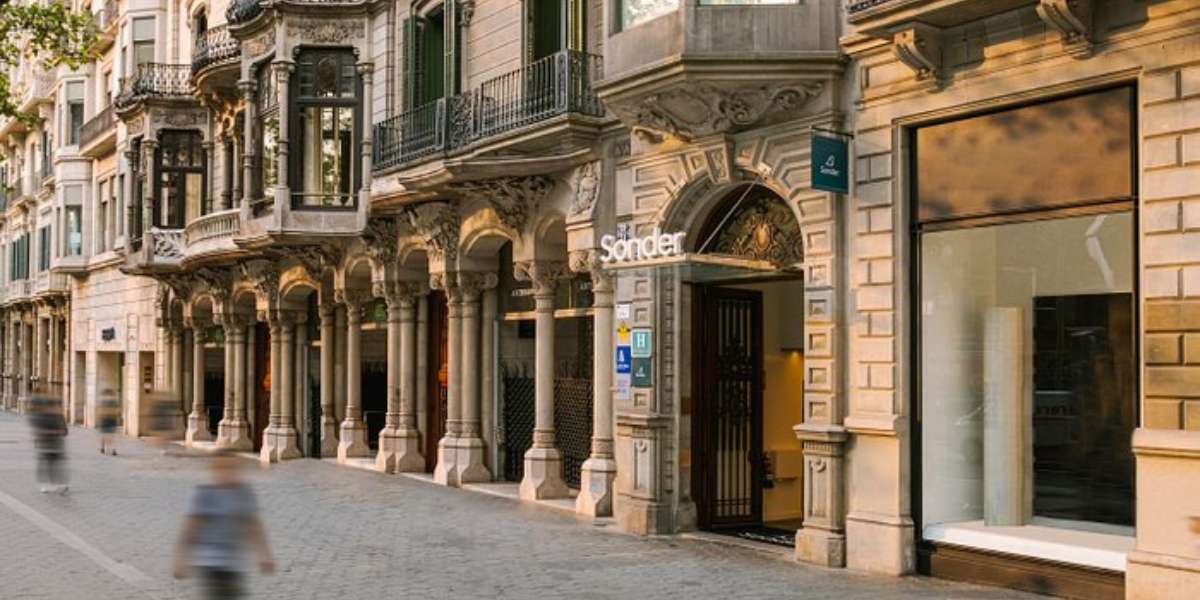
Apart from shopping, this avenue is a hotbed of architectural wonders. Two places that steal the spotlight here are Casa Mila and Casa Batllo. They’re not just buildings; they’re like artworks you can walk into!
Casa Mila
Casa Milà, fondly known as La Pedrera, stands tall in Barcelona, earning its spot as a UNESCO World Heritage Site. This stunning creation by the renowned Antoni Gaudí showcases a special stone exterior that’s sure to amaze you!
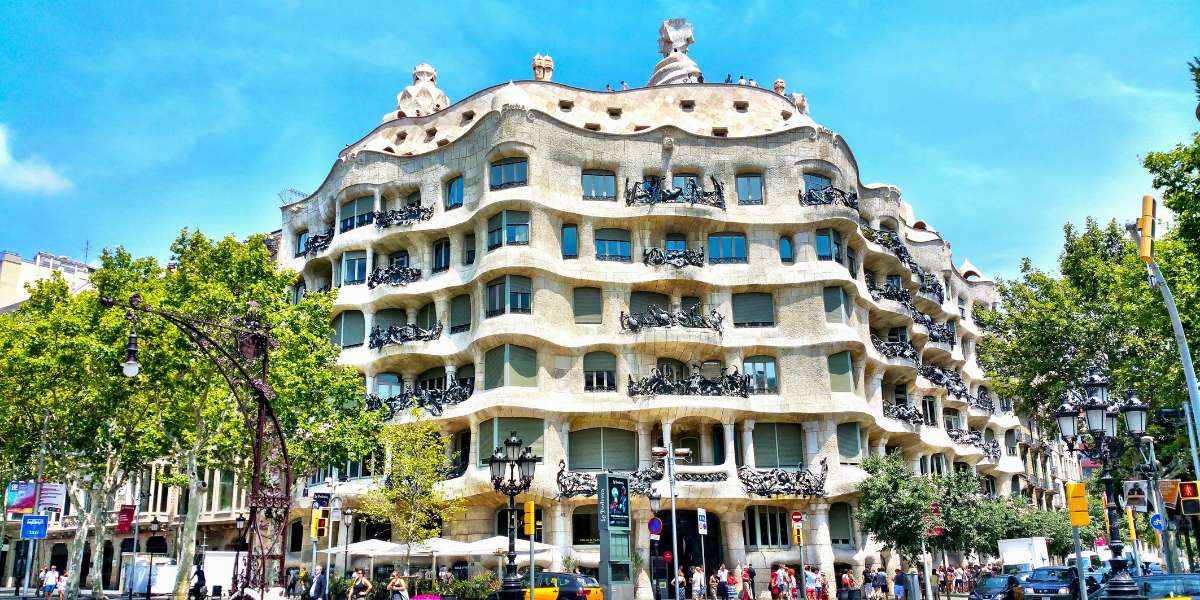
But wait, there’s more to Casa Milà than just its incredible appearance. Step inside and discover nine gorgeously decked-out apartments, intriguing exhibits (including the Espai Gaudí and a collection of his work), stroll through inner patios, and head up to the rooftop adorned with amazing sculpted chimneys and towers.
Casa Batlló
Casa Batlló, found smack dab in Barcelona, Spain, is another UNESCO World Heritage Site. Antoni Gaudí, the creative genius, crafted this masterpiece too.
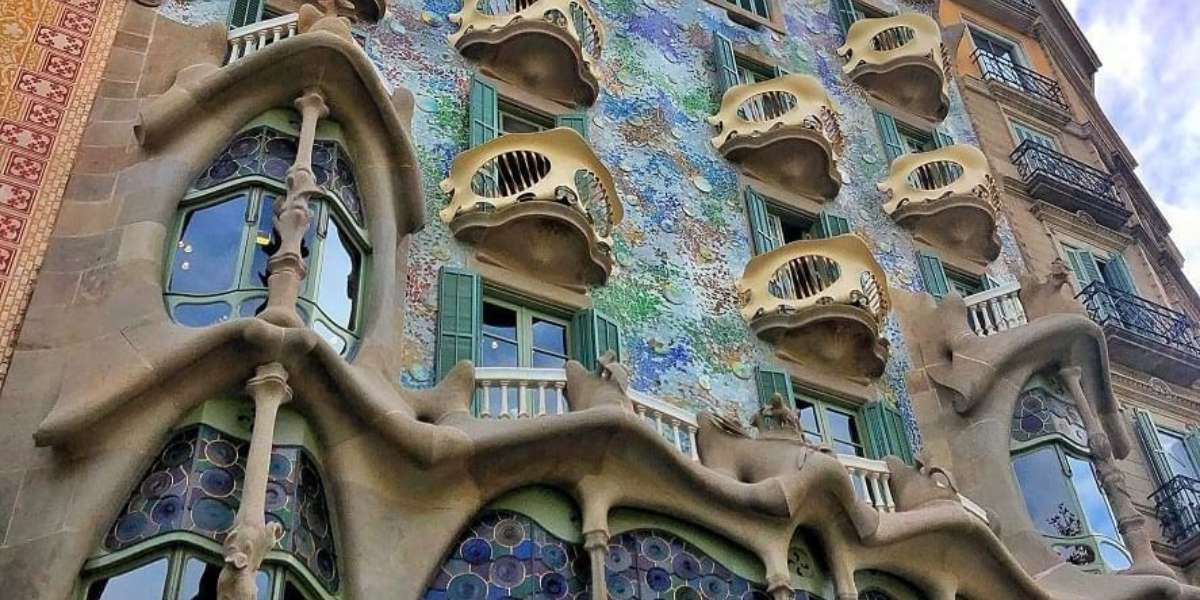
Locals call it Casa dels ossos, which means “House of Bones.” Why? Because it’s got a wild, bone-like vibe that’s so Gaudí-esque. It’s extremely unique, just like everything else he made, falling into the Modernisme or Art Nouveau style, if you’re into labels. The ground floor is especially mind-blowing, with fancy patterns, weird oval windows, and cool sculpted stone work.
Gothic Quarter
Barcelona’s Gothic Quarter is like a time travel adventure spanning over 2,000 years. It’s called Barry Gotic in Catalan, and it’s packed with tales and charm.
Stroll through its narrow, twisty streets and you’ll bump into ancient medieval buildings, cute little plazas, and secret courtyards whispering tales of Barcelona’s past. There’s the Gothic Cathedral, Plaça Reial, and even bits of old Roman walls to explore.
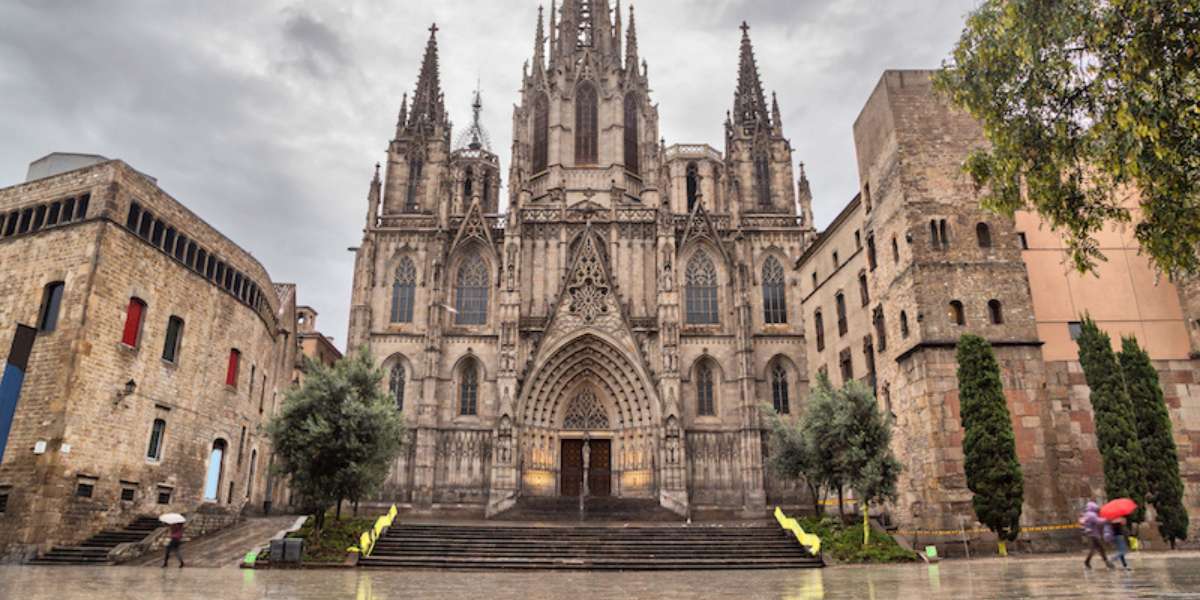
When the sun sets, this neighborhood wakes up! Dive bars, dance spots, and fancy lounges call out to party lovers for a Spanish-style night bash that often goes on till the wee hours.
But it’s not just history and party vibes here. The Gothic Quarter is great for shopping and dining. Cute little shops, cozy cafes, and classy restaurants serve up yummy Catalan dishes, from tapas to paella.
Overall, it’s a blend of old stories and modern fun, making it a must-see spot in Barcelona.
Picasso Museum
Barcelona’s Picasso Museum, situated in the cute La Ribera neighborhood, is a must-visit. Set up in 1963 by Picasso’s friend Jaume Sabartés, this museum holds a whopping 4,000 of Picasso’s artworks, the biggest collection of his work worldwide.
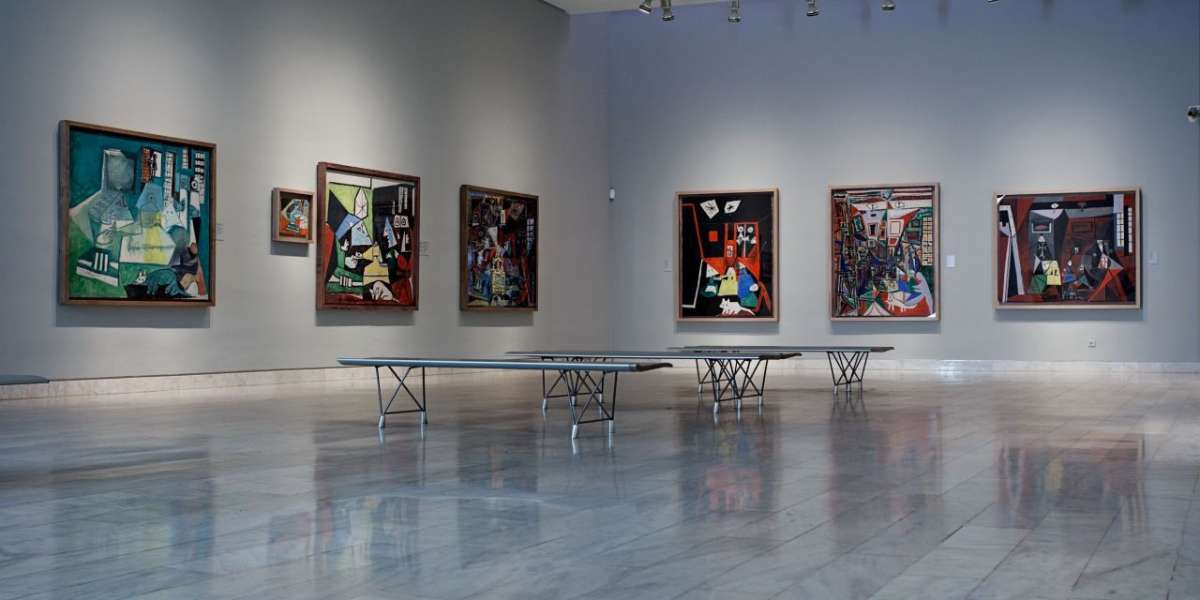
Here, you get a peek into Picasso’s art journey, from his early days learning from his dad to his famous masterpieces. You’ll spot iconic works like “Science and Charity,” “Portrait of Jaime Sabartes,” and “Harlequin,” getting a front-row seat to Picasso’s mark on modern art.
Las Ramblas
When you’re in Barcelona, La Rambla is the spot you can’t skip—it’s the city’s star street! This vibrant, tree-lined walkway spans 1.2 kilometers, linking the Columbus Monument in Port Vell to Plaça de Catalunya. There’s always a buzz here with stalls, artists, cozy spots, yummy eateries, and shops. It’s like a magnet for tourists, packing in a whole bunch of sensory delights.
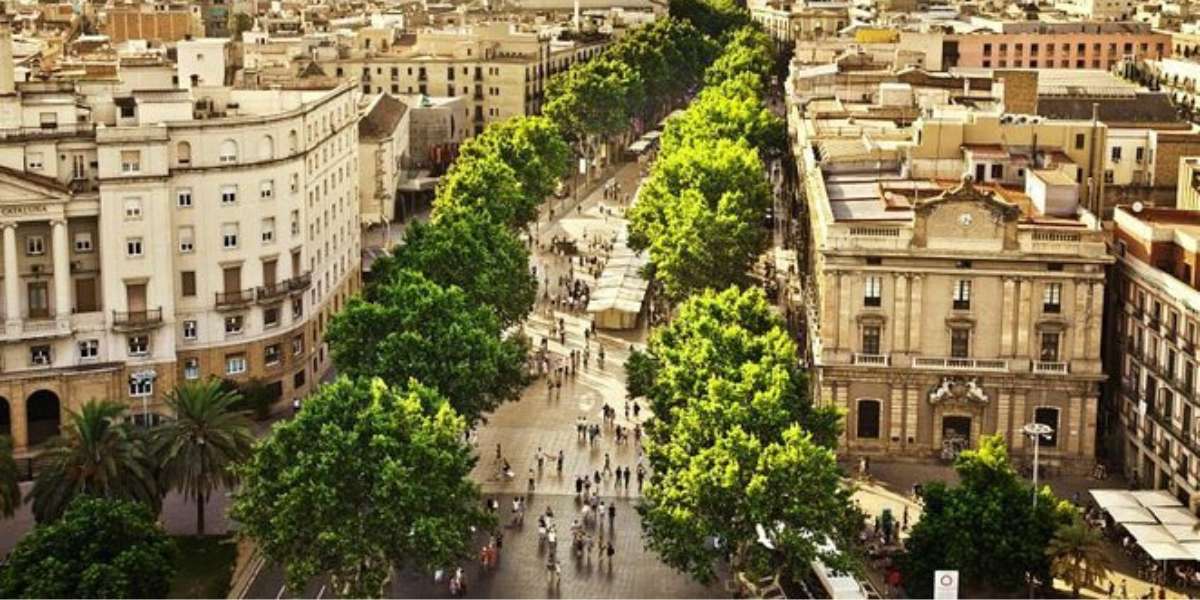
While you’re here, make sure to check out these top spots.
Columbus Monument
The Columbus Monument towers above the sea at the lower end of Las Ramblas. Made in 1888 to honor Christopher Columbus, it’s your ticket to a 360º view! Hop on the elevator, reach the top, and soak in those breathtaking views of the Mediterranean, Montjuic Hill, and the harbor.
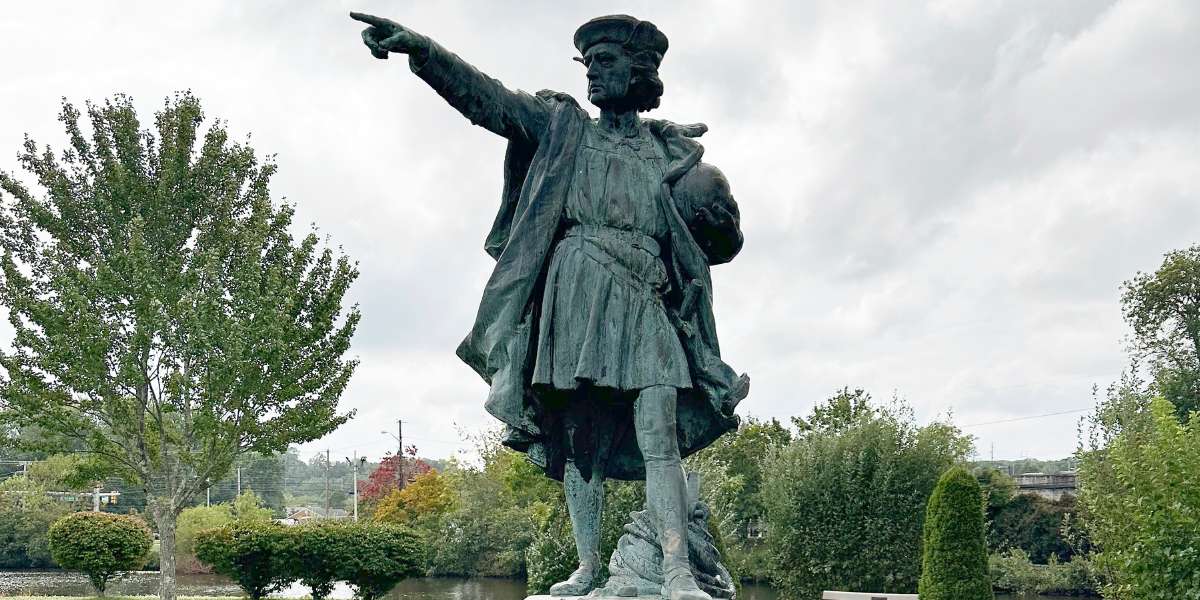
Gran Teatre del Liceu
It’s the city’s main opera house and has been around since 1847. It’s where you can catch stunning operas like Otello, awesome dance shows, and concerts with beautiful classical music.
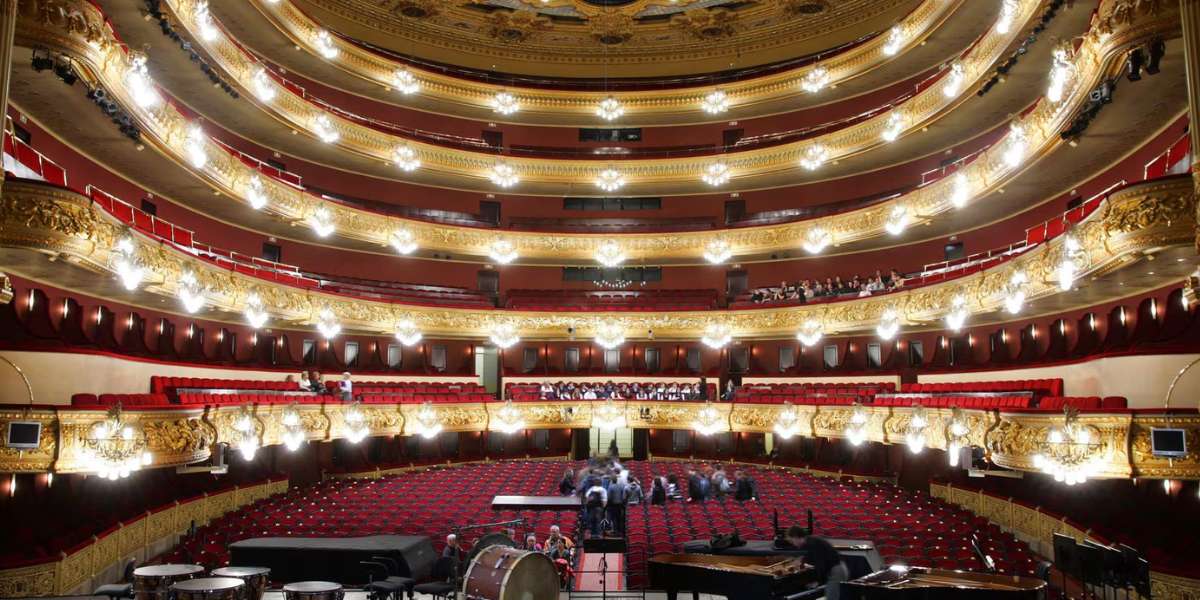
La Boqueria
La Boqueria is a super famous market that’s been bustling since 1836. It’s like a rainbow of fresh fruits and veggies, fish on ice, lots of meat, and even lovely flowers—all waiting for you to check out and maybe take some pics!
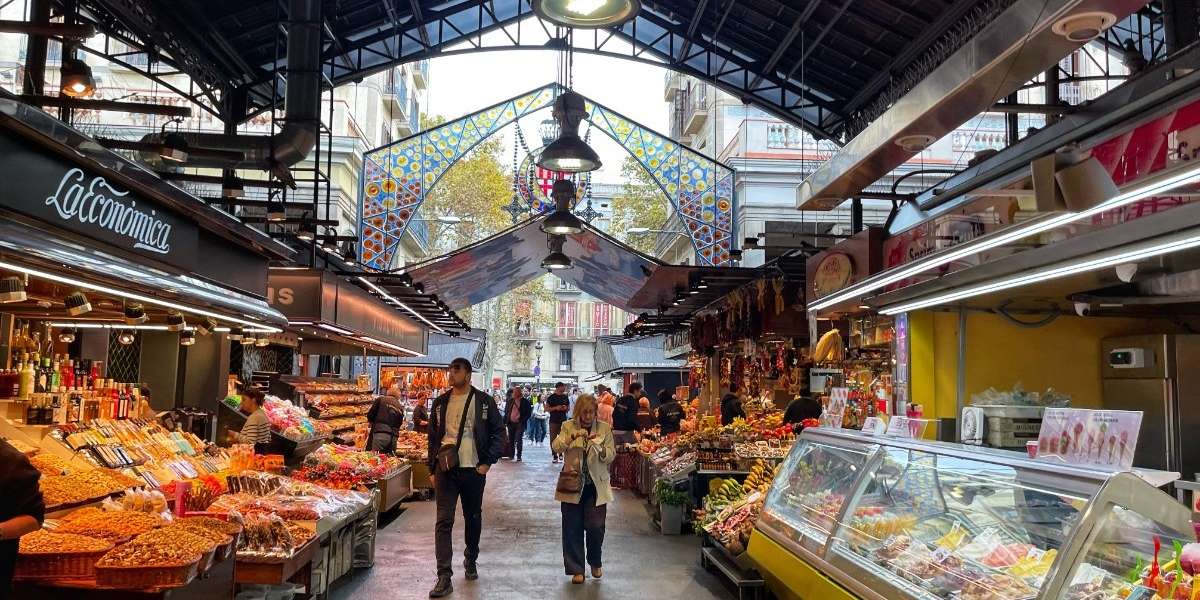
Centre d’Art Santa Mònica
Right around Las Ramblas, you’ll also spot the Centre d’Art Santa Mònica. It’s a fantastic gallery where artists from all over show off their stuff. You can get lost in their amazing exhibitions, and they’ve got an awesome café on the roof that serves up some seriously delicious food.
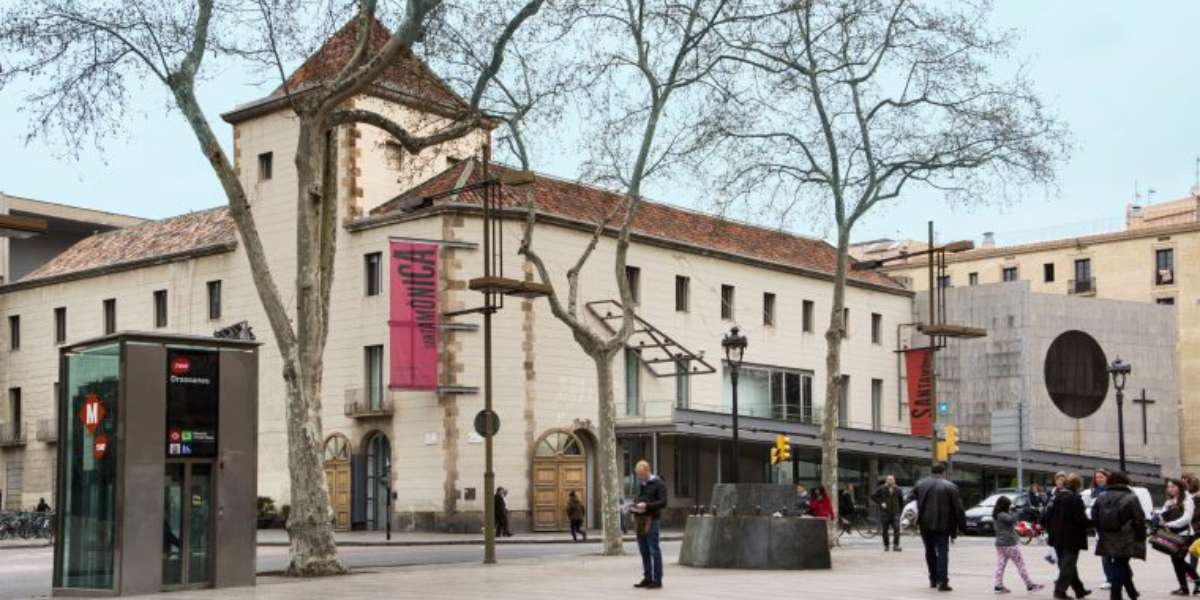
Park Guell
Park Güell is a famous city park in Barcelona’s Gràcia district. It’s super popular for its spectacular mosaics and the lizard statue. Covering about 15 hectares, it’s a big park that’s been around for a long time.
This park took 14 years to build! And guess what? It’s on the UNESCO World Heritage List since 1984. After Eusebi Güell passed away in 1922, the park got donated to Barcelona’s city government.
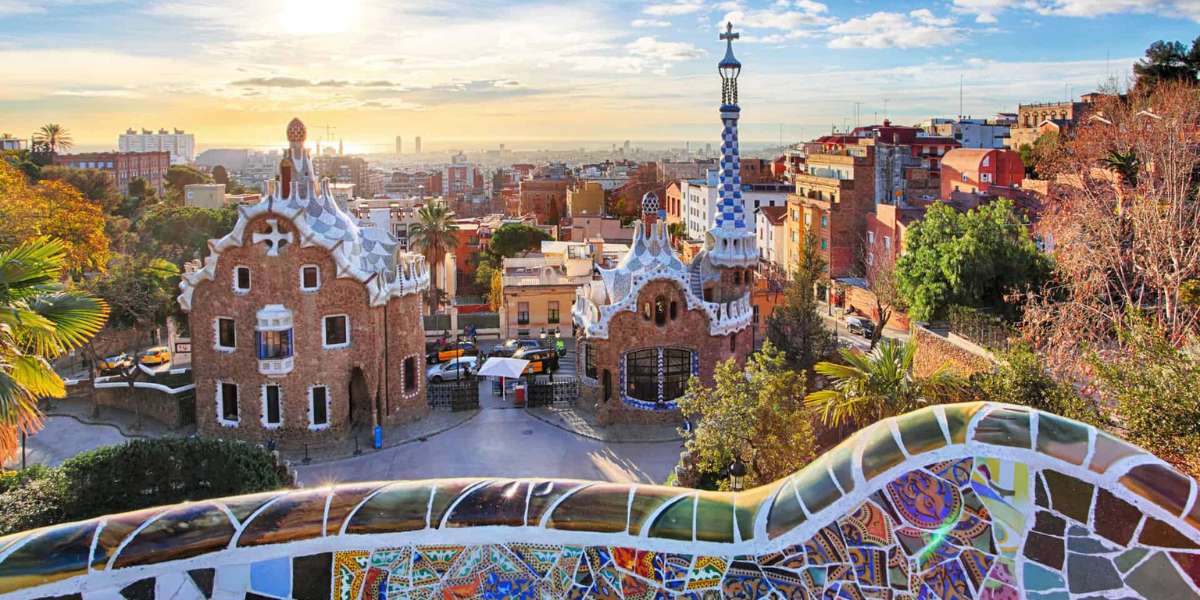
Inside, there are lots of wonderful things designed by Antoni Gaudi. When you step in, you’ll meet a colorful mosaic dragon. Then, there’s the Hypostyle Room, Guard Museum, Gardens of Austria, Nature Square, Wash House Portico, and tons of paths and beautiful views, all thanks to Gaudi’s brilliant ideas.
Another cool spot in Park Güell is the Casa Museu Gaudí. Gaudi actually lived here for 20 years! Now, it’s a museum dedicated to his life and work.
Sagrada Familia
The Sagrada Familia is a huge church in Barcelona that Antoni Gaudi designed. But here’s the thing, it’s not finished yet!
When it’s done, it’s supposed to have 18 towers. These towers make up three sides, called Facades, showing different parts of Jesus’ life. There’s the Nativity Facade about Jesus’ birth, the Passion Facade about his death and coming back to life, and the Glory Facade showing his everlasting greatness.
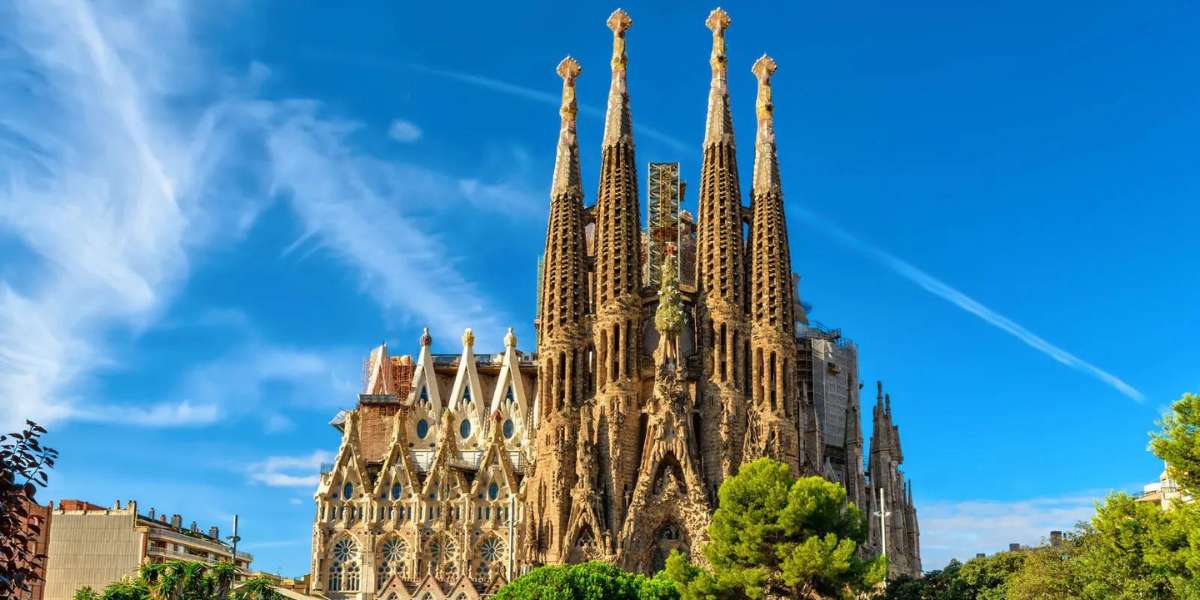
Each of these 18 towers is extremely special. Twelve are for Jesus’ Apostles, four are for the Evangelists, one’s for Virgin Mary, and the tallest one is for Jesus himself! And guess what? Climbing up these tall towers will give you the best view of Barcelona!
Barcelona Cathedral
Nestled in Catalonia’s capital, the Barcelona Cathedral, officially known as the Cathedral of the Holy Cross and Saint Eulalia, stands as a breathtaking religious monument. It draws thousands of visitors annually, all captivated by its remarkable architecture and design.
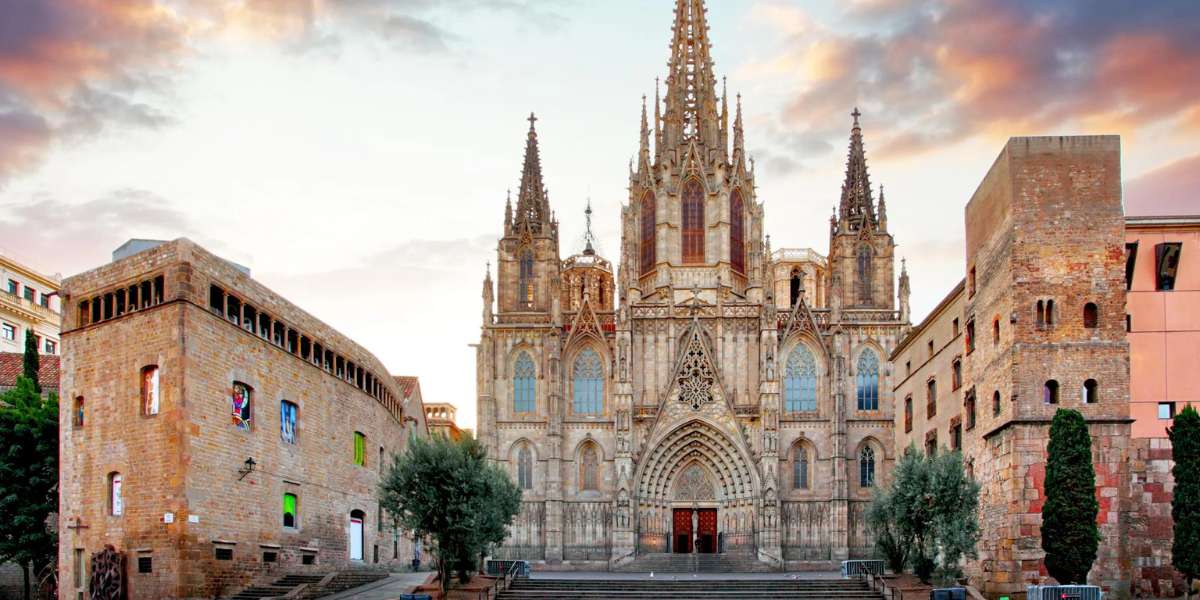
As you explore, take in the awe-inspiring craftsmanship displayed in the intricate exterior details and the beautiful gold furnishings, which include a grand altarpiece and an array of 140 saintly statues. And don’t overlook the cloister—a gorgeous space with a lush tropical garden that’ll take your experience up a notch.
Parc de la Ciutadella
The Parc de la Ciutadella is a serene retreat nestled in bustling Barcelona. It’s a lush green haven, perfect for unwinding, strolling, or having a relaxing picnic. You can also hop on a rowboat and glide along the beautiful lake for a peaceful and fun experience!
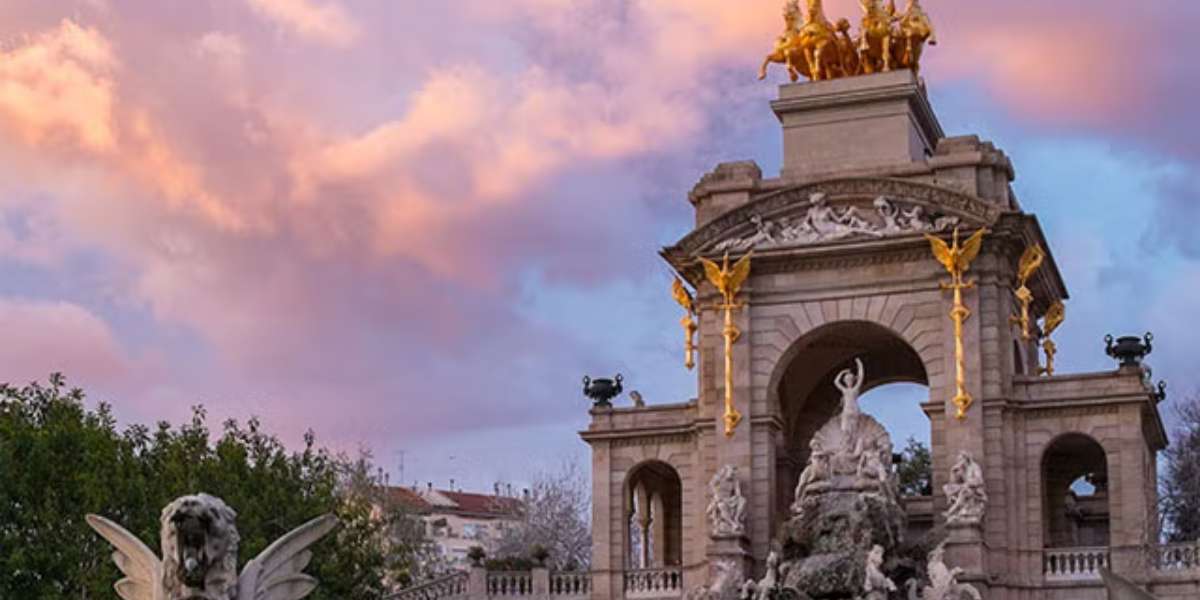
Inside the park, there are many things for you to see, including,
- Castle of the three Dragons: This old brick castle is home to the Zoological Museum. It has a unique style from way back in 1887, showing off early Modernism. Since 1920, it has become the Zoological Museum.
- The Winter Garden: Right next to the castle, you’ll find the fascinating pavilion made of glass and cast iron. It’s called the Winter Garden or “L’Hivernacle.”
- Geological Museum: This museum next to the Winter Garden was built in 1882. It’s decked out in a fancy neo-classical style and has a huge collection of minerals for you to check out.
- Umbracle: Imagine a greenhouse made of wood and bricks—well, that’s the Umbracle. It houses big tropical plants that thrive in shady spots, just like in a real forest.
- Zoo Barcelona: One of Europe’s oldest zoos! There are all sorts of animals here, even some rare ones like Lyle’s flying fox and ring-tailed lemurs. Families love coming here when they visit the park.
Wine Tasting
When you’re in Barcelona, don’t miss out on the awesome wine scene. Whether you really know your wines or just want a fun thing to do, trying out wines in Barcelona is a real treat for your taste buds!!
Barcelona has been making wine for ages, going way back, especially with the famous Cava wines starting in the 19th century. You can join the Create Your Own Cava tour, where you actually get to join in on making wine. Or try the 4×4 Winery Tour in the Penedes Region, where you hop on fancy SUV rides and munch on tasty tapas while exploring wineries.
Madrid
Madrid, at Spain’s core, bursts with cultural brilliance, housing incredible art and lively neighborhoods brimming with creativity. It’s a classic European city boasting a royal palace and delightful local foods. Don’t miss visiting this gem when in Spain.
Here’s a list of our top recommendations that you should check our when visiting Madrid.
The Royal Palace
This place was home to Spanish monarchs from Carlos III to Alfonso XIII. Now, it’s a museum showcasing the grandeur of Spain’s royal elite. The architecture, inspired by sketches for the Louvre in Paris, was brought to life by Juan Bautista Sachetti, following plans by Filippo Juvarra. Inside the 3,000 rooms, the décor changed with each new monarch to suit his taste.
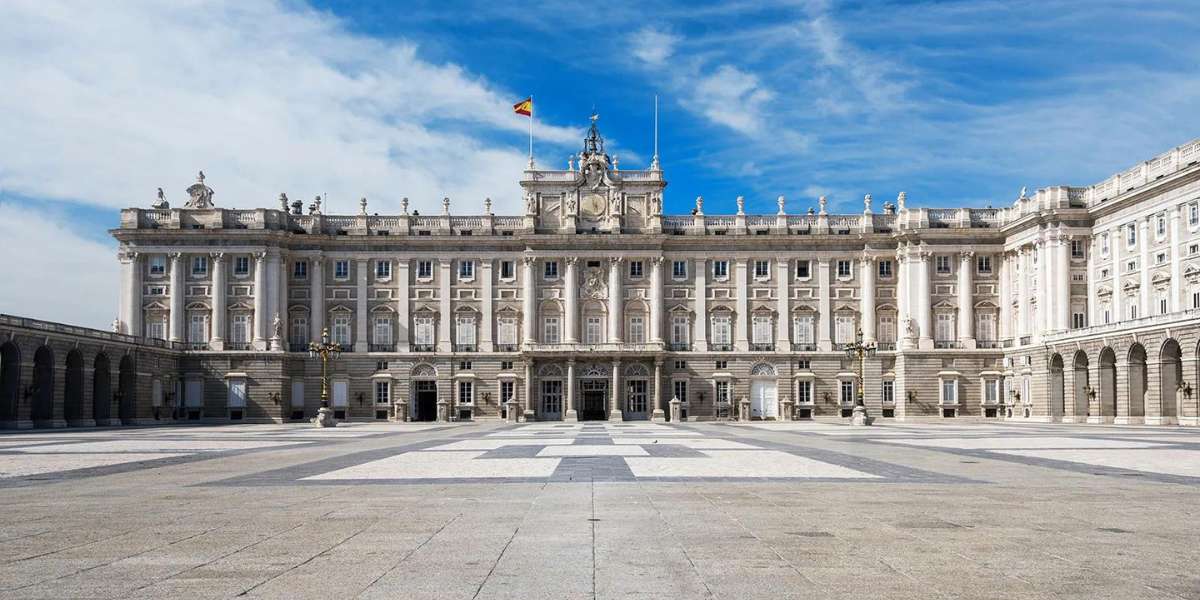
While you’re here, we especially recommend checking out Sabatini’s main staircase, the Throne Room, the Royal Chapel, and the Royal Apothecary.
Prado Museum
Housed in a big, classical-style building, the Prado is Spain’s most important art museum. It started taking shape in 1785 under Juan de Villanueva, commissioned by King Carlos III. Recently, it got bigger with a new cube-shaped building for temporary exhibitions, designed by Rafael Moneo. Some famous works here include ‘The Third of May 1808′ by Francisco de Goya, ‘Las Meninas’ by Diego Velázquez, and ‘The Garden of Earthly Delights’ by Hieronymus Bosch.
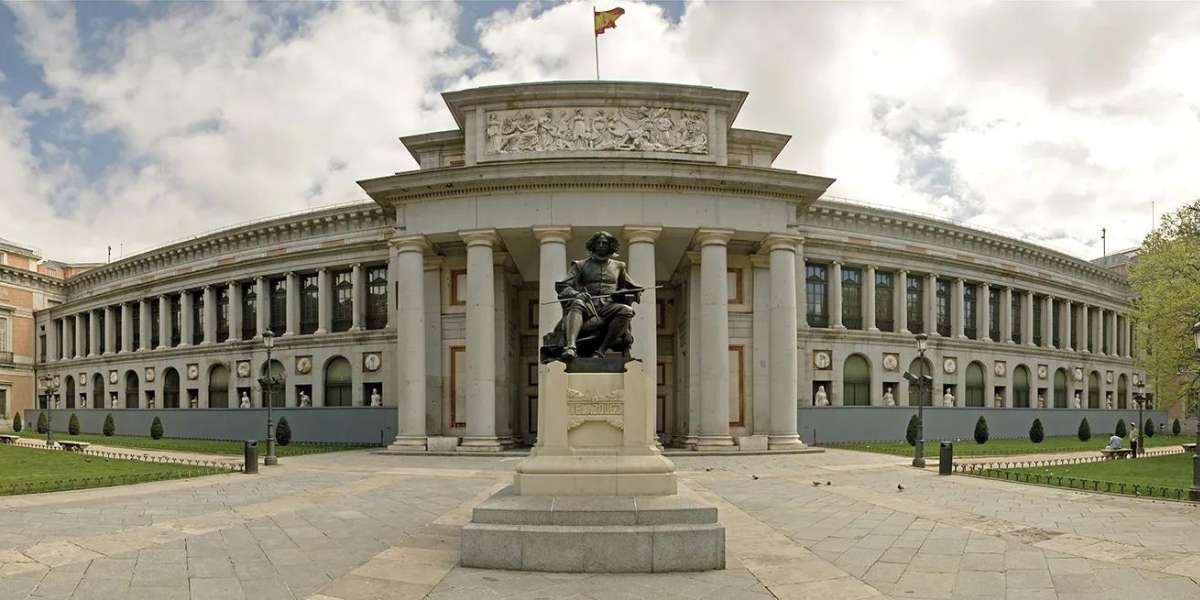
Retiro Park
This 118-hectare park has roots dating back to the construction of the Monasterio de los Jerónimos under the Catholic Monarchs. It’s a popular green space for locals to relax.
Apart from vast lawns and well-kept trees, the park houses historic monuments like the Alfonso XII monument, a stunning colonnade by José Grases Riera facing the pond, the Casón del Buen Retiro (now part of the Prado Museum), and the Palacio de Cristal, built in 1887 for the Philippines Exposition.
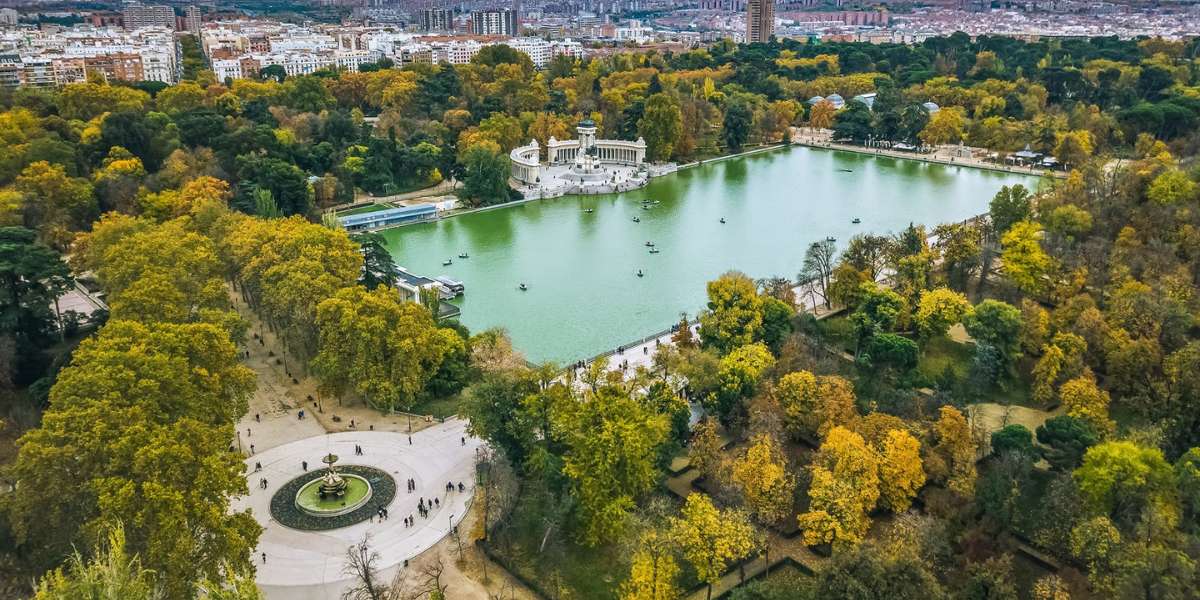
The park’s gardens hold even more beauty, including a rose garden, the Casa de Vacas cultural center, and various fountains and statues, such as the famous ‘Ángel Caído’ (‘Fallen Angel’) sculpture.
Gran Via
Gran Via is a major place for tourists and shopping in the center of the city. It starts at C/Alcalá and goes for about 1.3 kilometers until it reaches Plaza de España. For more than 100 years, it’s had different names depending on who was in charge. When there was a war in Spain, people called it the Avenue of Mortars because shells landed on the sidewalks and buildings. In 1981, when things changed in Spain, they started calling it Gran Vía. Throughout its long history, Gran Vía has had Madrid’s first big shops and some really great places for fun in the city.
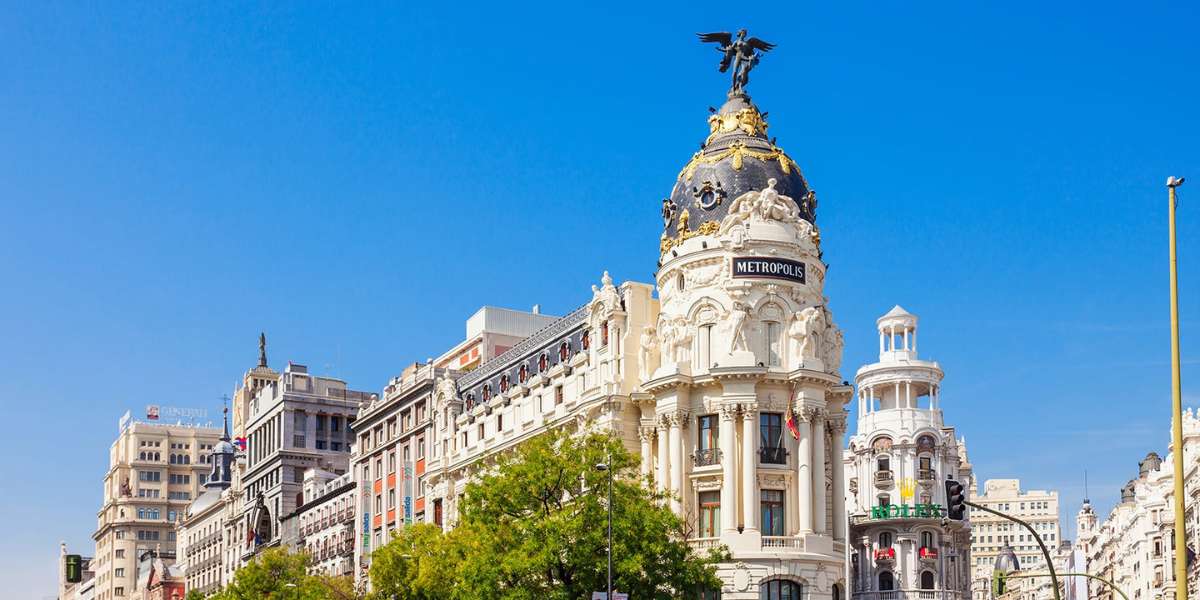
Templo de Debod
Cairo isn’t the only city housing Ancient Egyptian artefacts. Madrid has them too!
Check out the Templo de Debod that is more than 2200 years old and was built in order of the gods Isis and Amun.
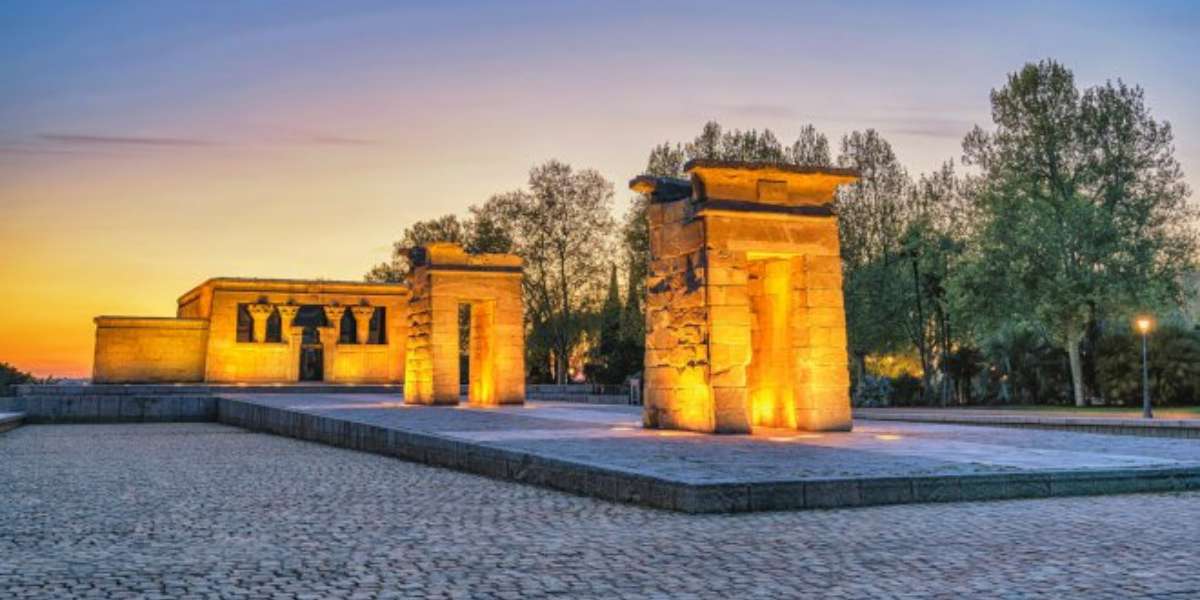
Although the Egyptians didn’t come to Madrid to build this temple, the Egyptian government sent history bricks to Spain in 1968 to thank the country for helping preserve monuments that might have been destroyed due to the Aswan Dam. These bricks were used for making this Templo!
La Plaza Mayor
The Plaza Mayor is right in the middle of the old part of the city. A long time ago, it used to be the busiest market in the late 15th century. But now, it’s where the Madrid Tourism Centre is. In the middle of the square, there’s a statue of Felipe III made by Giambologna and finished by Pietro Tacca in 1616. Another important thing there is the Arco de Cuchilleros, which is the most famous way into the square. It was made by Juan Villanueva. After a big fire in 1790, he made changes to the buildings and the archways to make it look the way it does today.
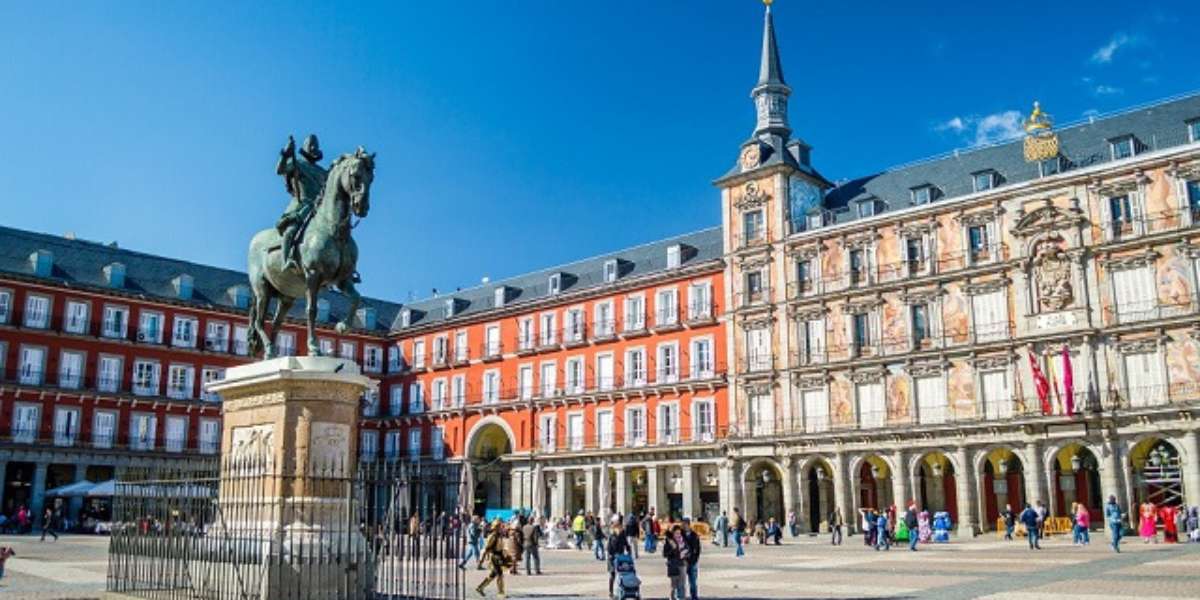
Mercado de San Miguel
Experience the real flavors of Spanish food at Mercado de San Miguel, a lively food spot set in a historic ironwork building. Instead of choosing just one place to eat, you can taste food from over 20 different places, which is why both tourists and locals love it. While it might be a bit pricey, lots of vendors give out free samples. You should definitely try the banderillas – they’re skewers with olives, veggies, and seafood, and they cost about 1 or 2 euros each.
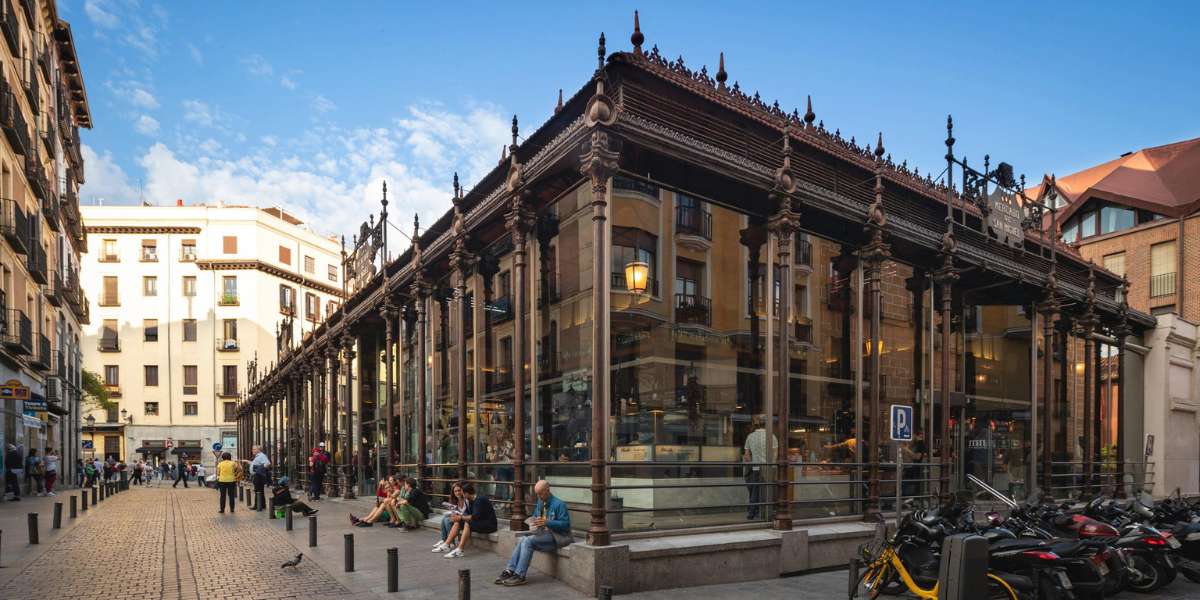
Chocolatería San Ginés
The best spot for ‘churros con chocolate’ in Madrid is San Ginés. Since 1894, they’ve been serving chocolate and churros 24/7. To manage the long lines at 5 am, they use a prepaid ticket system, catering to both late-night partygoers and cheerful older ladies. You can’t go wrong with their slender churros or the chunkier ‘porras’ – they’re the perfect match for a cup of thick, dipping chocolate.
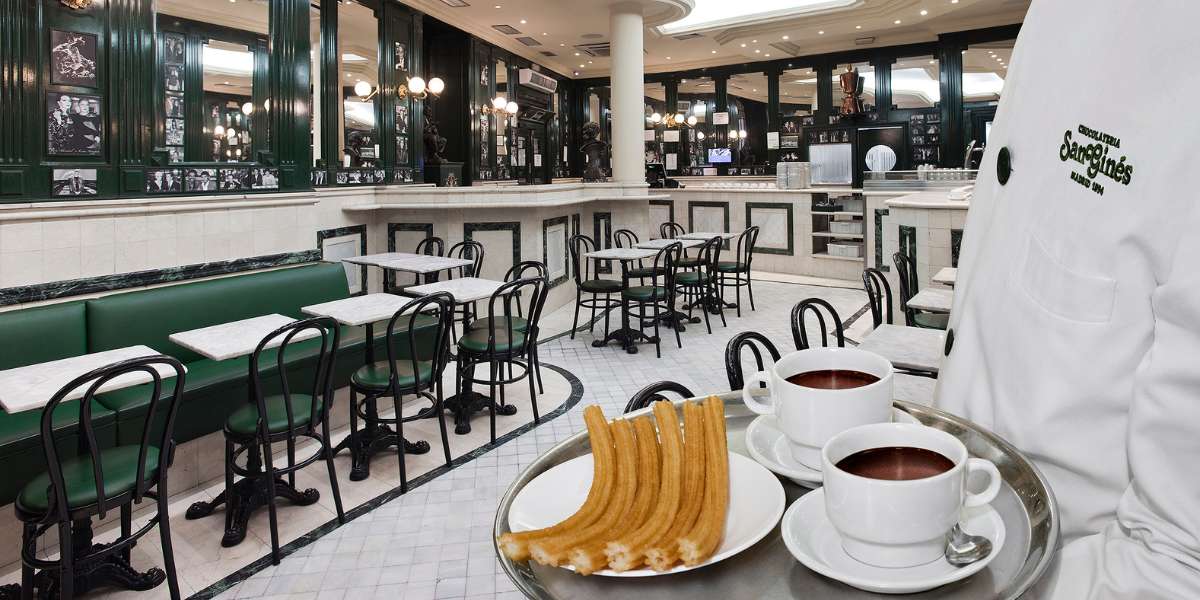
Museo Nacional Centro de Arte Reina
You’ve got to visit this museum in Madrid along with the Prado. The Reina Sofía museum is big on contemporary art and has a really impressive look with three glass and steel lift towers on the front. In 2005, they added more space at the back, around 30,000 square meters, mostly for temporary exhibitions. The highlight here is definitely Pablo Picasso’s ‘Guernica’, a painting that remembers the bombing of Guernica in 1937 during the Spanish Civil War by German bombers who supported Franco’s forces.
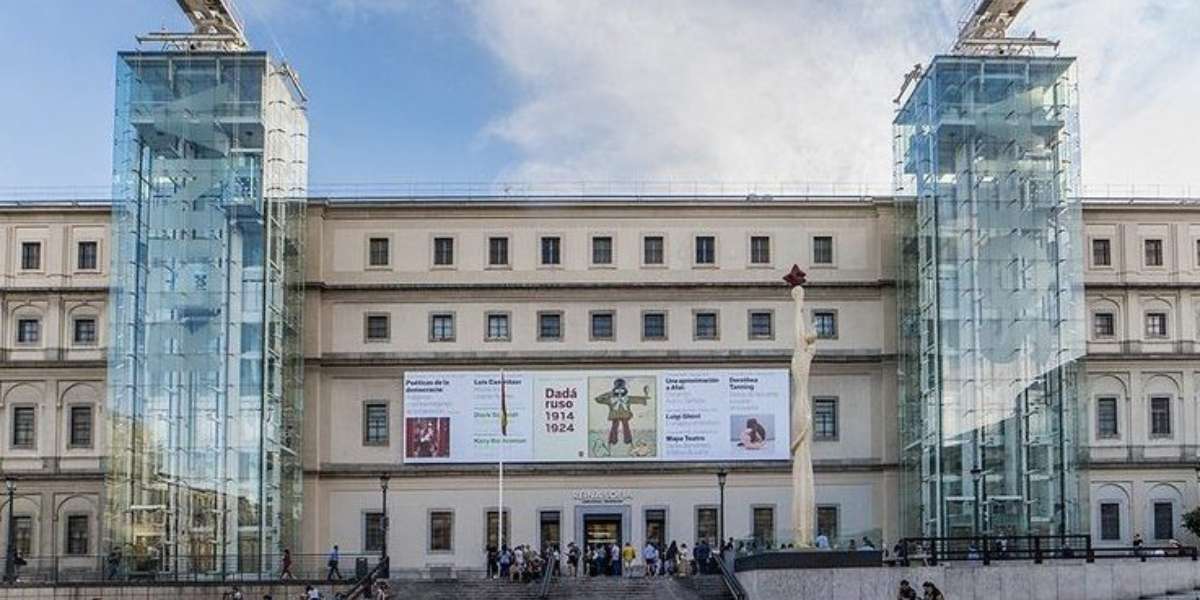
Watch a Flamenco Show
Catch an authentic Flamenco Show while you’re in Madrid! Flamenco is a famous Spanish dance that everyone knows about – you’ve probably seen it in movies or on TV. So, when you’re here, make sure not to miss it! You can see the Cardamomo Flamenco Show, which The New York Times recommends. Or, check out La Cueva De Lola, where you can enjoy the dance and even try a real Andalusian meal!
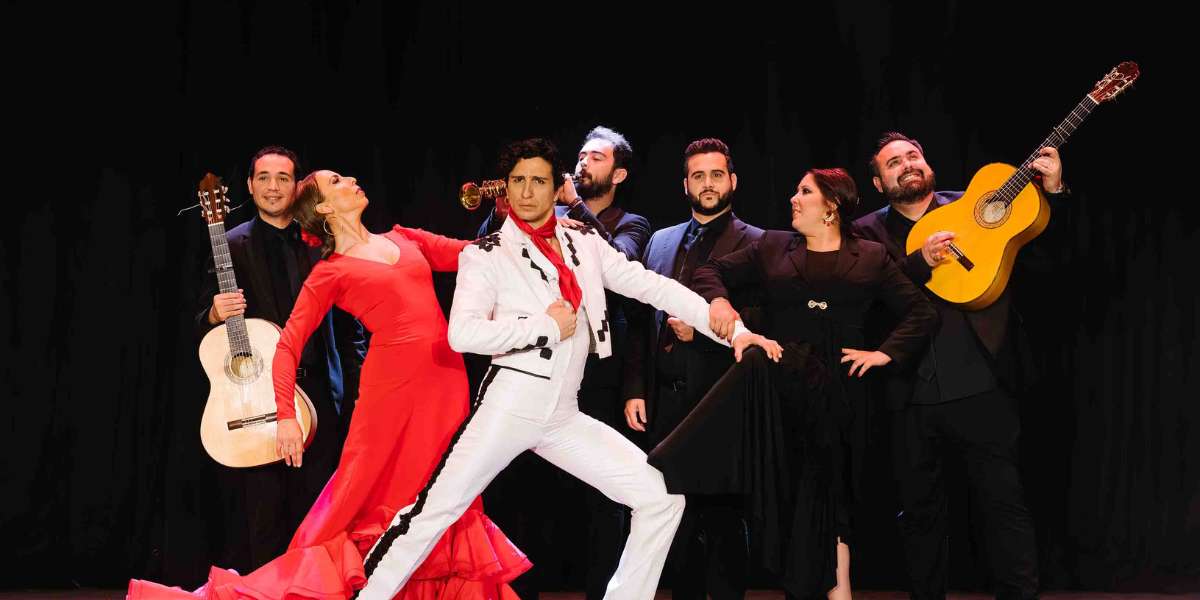
Museum of Illusions
Explore the Museum of Illusions in Barcelona, a delightful place devoted to mind-bending optical illusions. This museum has captivated locals and tourists alike since 2020, offering an array of fascinating tricks that will transport you back to childhood wonder. From the intriguing Rubin vase to captivating 3D stereograms and even lesser-known, peculiar illusions, there’s something for everyone to enjoy. If you have young children, they’ll especially find this museum a fantastic experience.
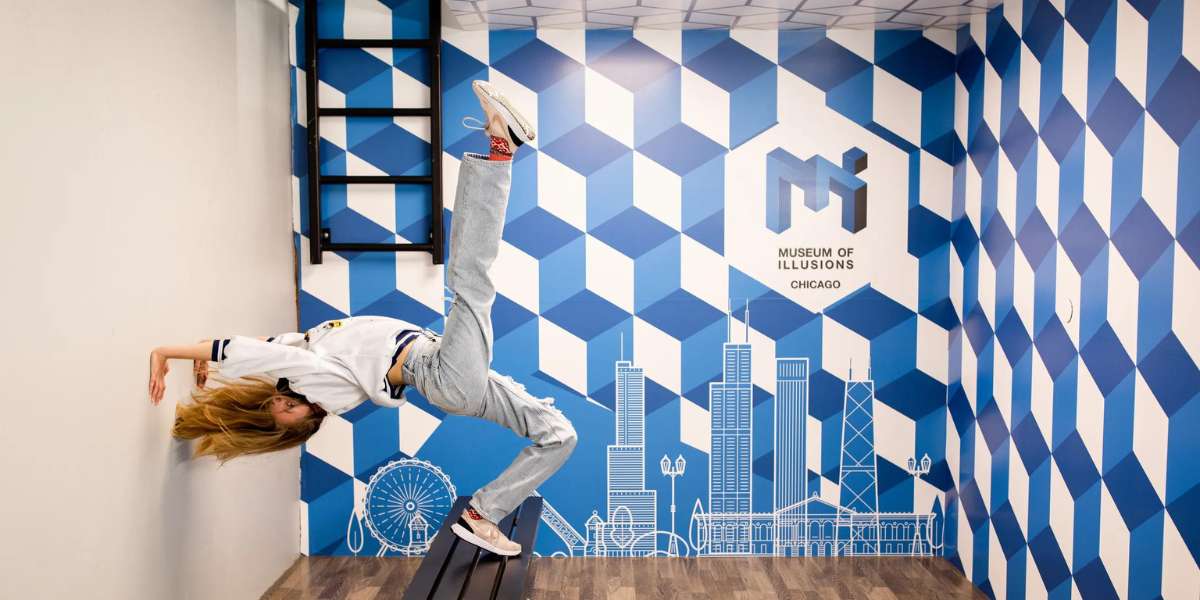
Teatros del Canal
Teatros del Canal is one of Madrid’s newest and trendiest theaters showcasing contemporary dance and theater productions. Despite its brief existence of less than ten years, Teatros del Canal has swiftly become a captivating hub for performances in Madrid. This modern venue houses two theaters presenting a diverse array of plays, zarzuelas, cabaret, dance exhibitions, operas, and concerts, catering to various preferences. Since 2009, around 1.5 million attendees have relished approximately 700 shows. If you’re curious about the behind-the-scenes magic or perhaps want to encounter the rumored resident ghost, guided tours are also available.
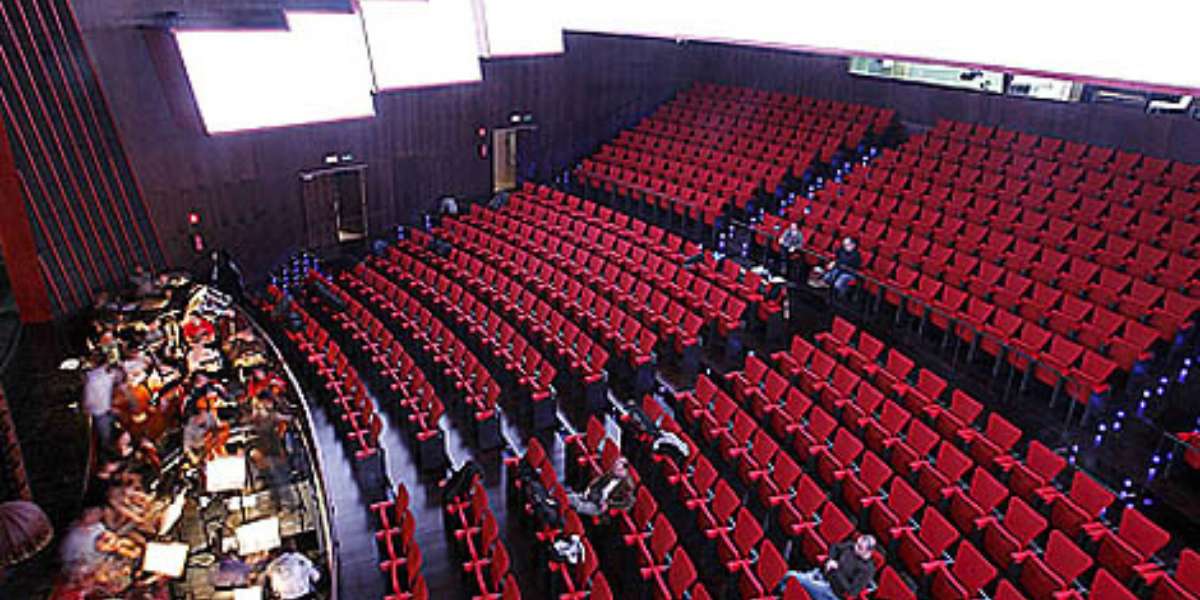
Puerta Del Sol
Explore Puerta Del Sol, a bustling public square renowned for its iconic clock and its position as the heart of Spain’s road network. This vibrant park offers inviting open areas, delightful cafes, and the chance to witness Madrid’s iconic landmarks, notably the legendary bear statue and the strawberry tree marking the entrance to Calle Alcala.
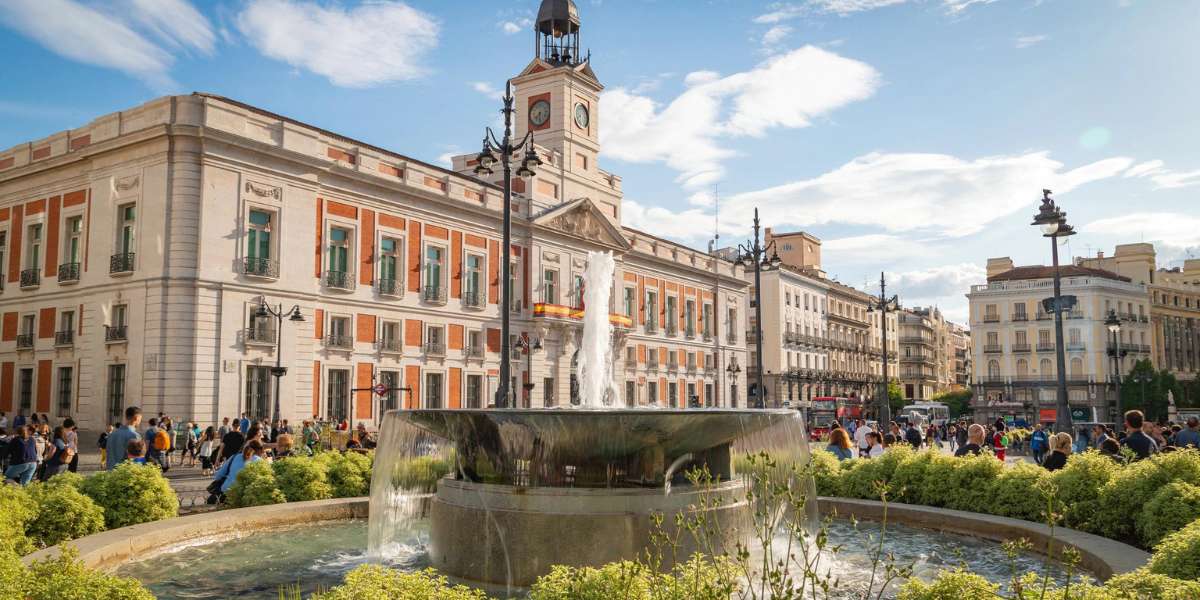
Puerta Del Sol welcomes everyone, offering the perfect combination of captivating architecture, rich history, and serene spots for leisure. The events hosted here are family-friendly, appealing to both kids and adults, making it an enjoyable destination for all.
Platea
Platea Madrid is a sprawling food haven spanning nearly 6,000 square meters, offering a gourmet indulgence to visitors. Nestled in Plaza de Colón square, this former cinema has transformed into a culinary paradise catering to enthusiasts of fine dining.
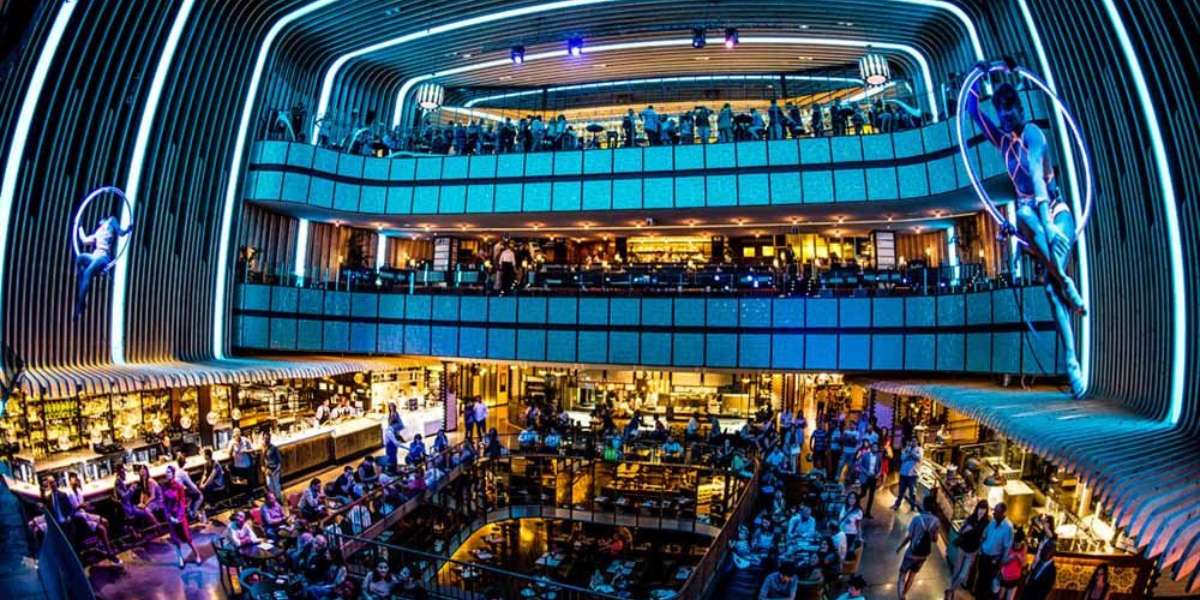
Platea Madrid surpasses the traditional market concept, standing out as one of Europe’s largest gastronomic spaces. It houses a restaurant, cocktail bar, artisanal pastry shop, gourmet markets, and over a dozen stalls serving delectable cuisines, including an array of Iberian cured meats. Renowned chefs, a grand central courtyard, a distinctive setting reminiscent of an old cinema screen, and versatile spaces for events are the highlights of this venue.
Segovia
A UNESCO World Heritage city, Segovia, is a spectacular city that you should visit especially if you love fairytales. It has a beautiful castle that’s sure to leave every disney lover is absolute awe.
Aqueduct of Segovia
The Aqueduct of Segovia stands tall with 167 arches, defining the city’s skyline. These arches, an iconic symbol, represent the essence of Segovia. This Roman marvel remains one of the city’s prime attractions, standing at nearly 92 feet in height and showcasing remarkable preservation.
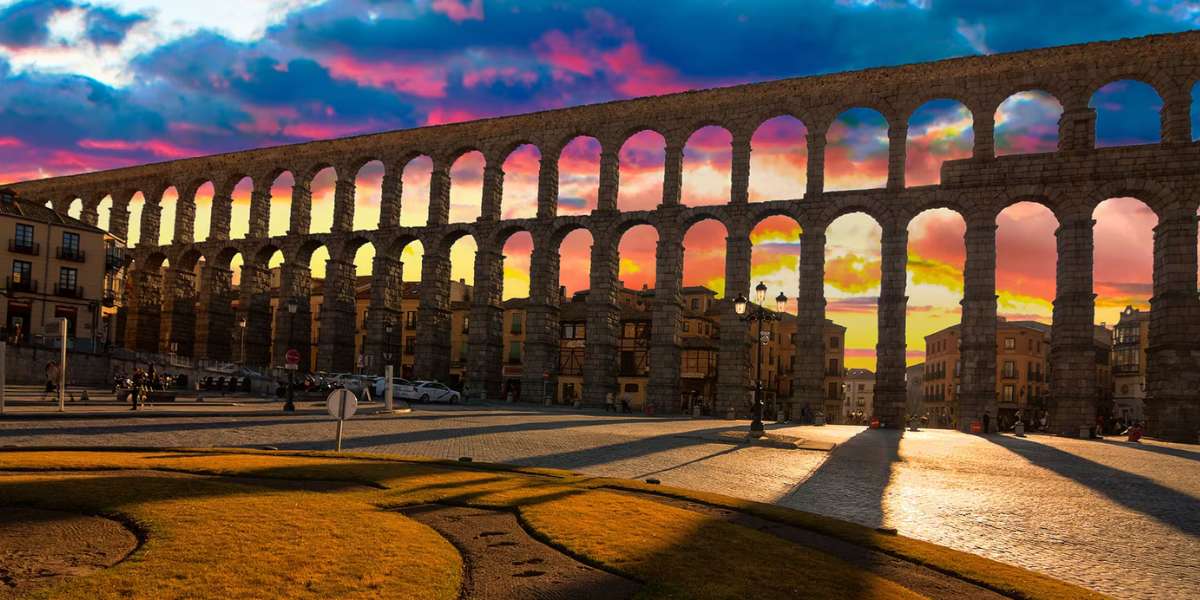
These ancient aqueducts made with incredible engineering have a fascinating design ensuring the precise flow of water.
Interestingly, the blocks binding this structure together rely solely on balance, without any mortar. This fact alone makes a visit to this marvel an absolute must.
Alcazar Fortress
Prepare to be amazed by the Alcazar Fortress, resembling a castle from a fairy tale, leaves each visitor in complete awe and wonder. It’s perched on a cliff and surrounded by a deep moat, offering beautiful views of Segovia.
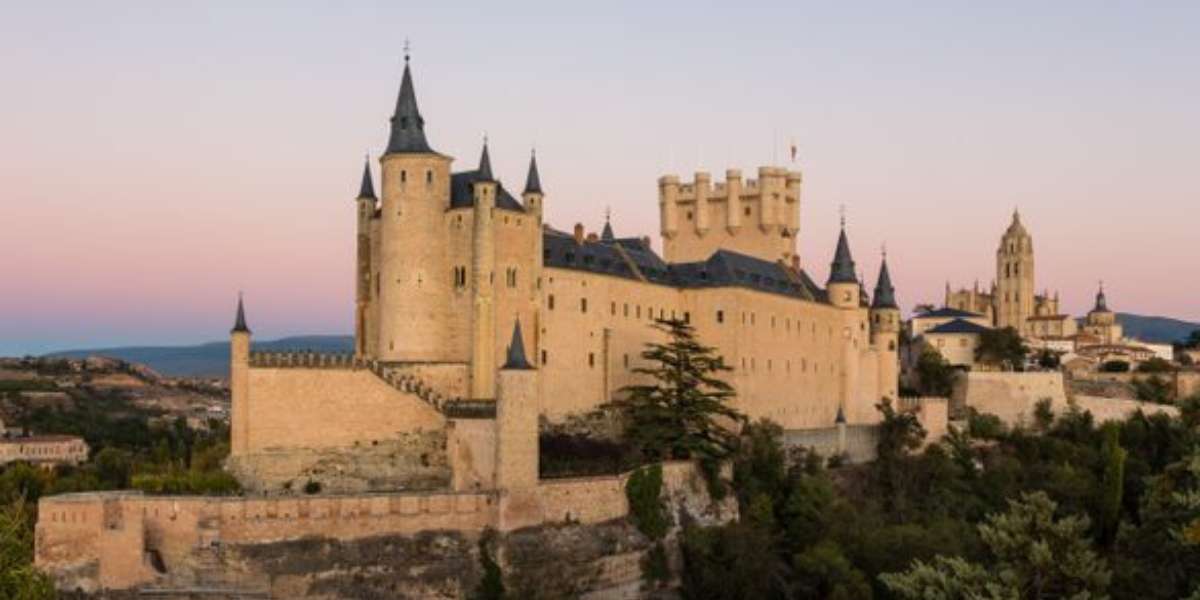
While you’re here, check out the Royal Artillery College Museum which is often overlooked. But, it holds immense historical significance and offers crucial insights into Spain’s military advancements.
Don’t miss the Fireplace Room, Armory, Hall of the Galley, Royal Chamber, Chapel, Throne Room, and Hall of the Kings; these are captivating spots that are our all time-favorites.
The Tower Of Juan II
Nested within the castle grounds, the Juan II Tower stands as a testament to 15th-century Spanish Gothic architecture. Its distinctive design has served as a captivating backdrop for numerous films over the past five decades, notably featuring in the recent Amazon series, “Wheel of Time.”
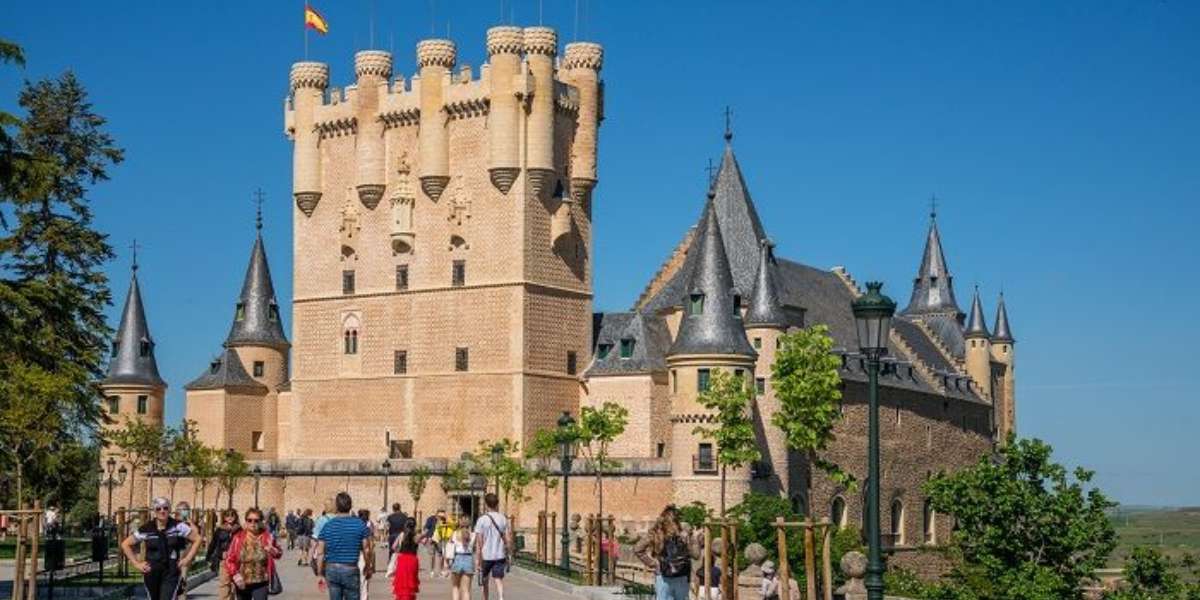
However, we especially love this tower as it offers breathtaking panoramic views of the Castilian plains and the scenic Segovia surroundings. For the adventurous souls willing to conquer the 152-step spiral staircase, the reward at the top will be well worth it!
Valencia
Valencia, Spain’s third-biggest city, sits on the East coast of the Iberian Peninsula next to the Mediterranean Sea. Unlike the larger cities in Spain that feel very busy and lively, this port city has a more relaxed vibe and really loves its natural sights. Here, you’ll see a mix of old and new: remains from a Roman colony dating back to 100BC alongside super-modern buildings.
Mercado Central
A must-visit spot in Valencia is the lively and renowned central market. Steeped in history, this bustling market stands as one of Europe’s oldest, welcoming visitors six days a week. It is located in a modernist structure built in 1914 and is decorated with beautiful stained-glass windows and ample space accommodating over 400 vendors.
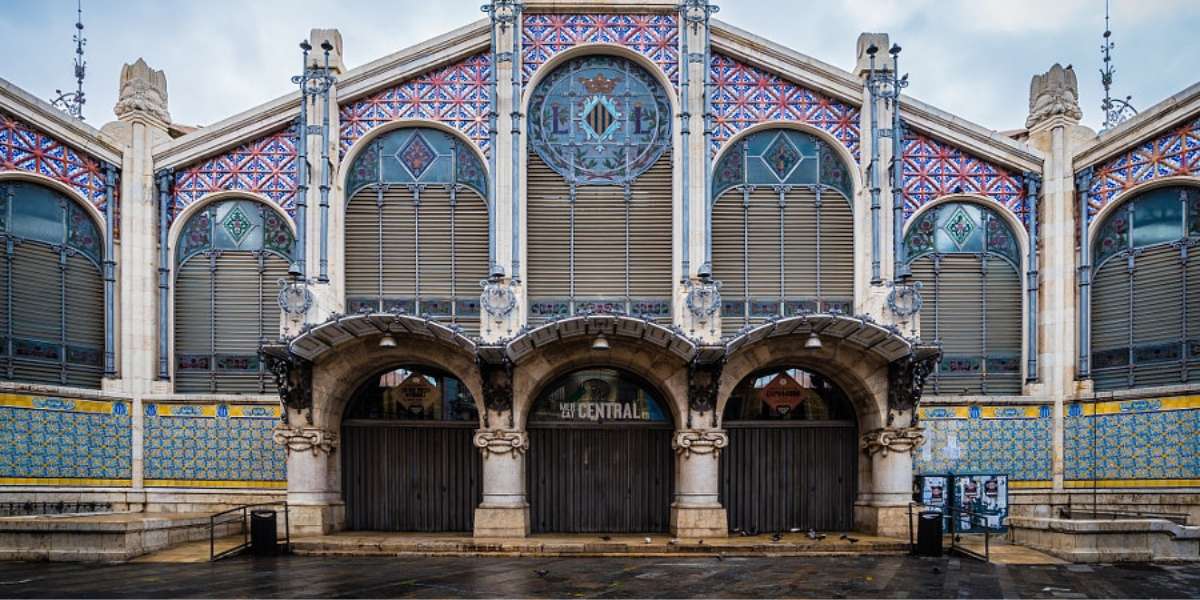
Indulge in a kaleidoscope of colors as you walk along the stalls full of fresh goods. From seafood, cured meats, and cheeses to an abundance of fruits, vegetables, and artisanal bread, the market boasts a delightful presentation and passionate sellers.
Plaça de la Reina
A definite must-visit in Valencia, Plaza de la Reina stands proudly at the core of the city’s historic area. This lively square serves as an ideal hub for locals, making it an excellent spot for people-watching.
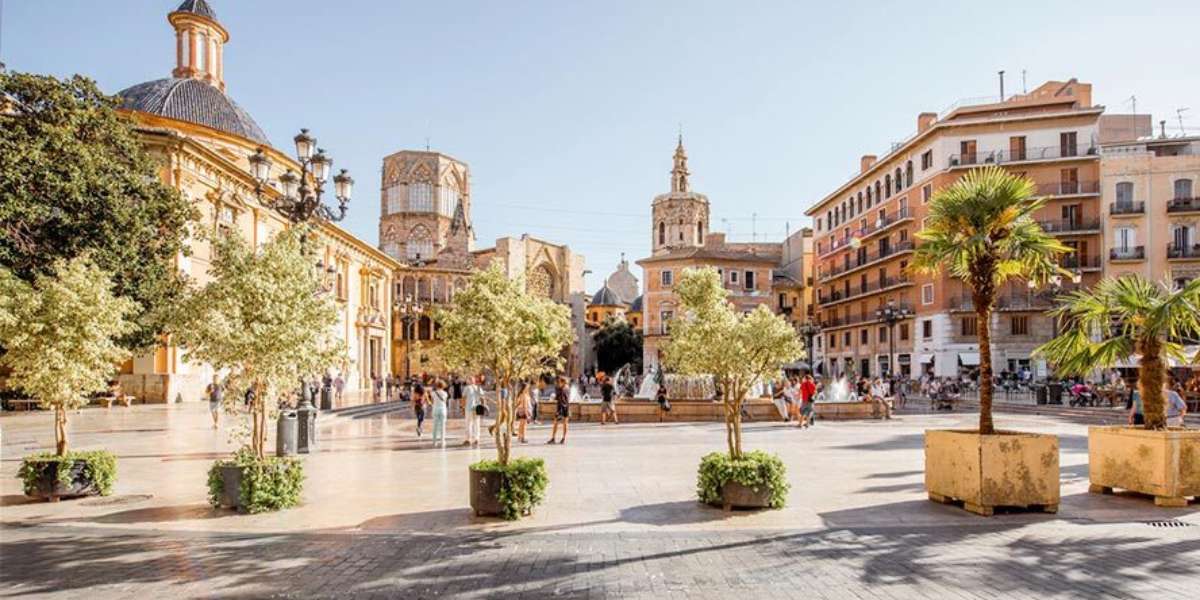
Surrounding the square, you’ll find a variety of charming cafes and restaurants, creating a perfect setting for a fun meal.
Valencia Cathedral
In Valencia’s historic old town, the Valencia Cathedral is a must visit. This renowned Roman Catholic church stands tall as one of the city’s most sought-after landmarks, boasting a rich history rooted in its construction, which spanned from the 13th to the 17th centuries.
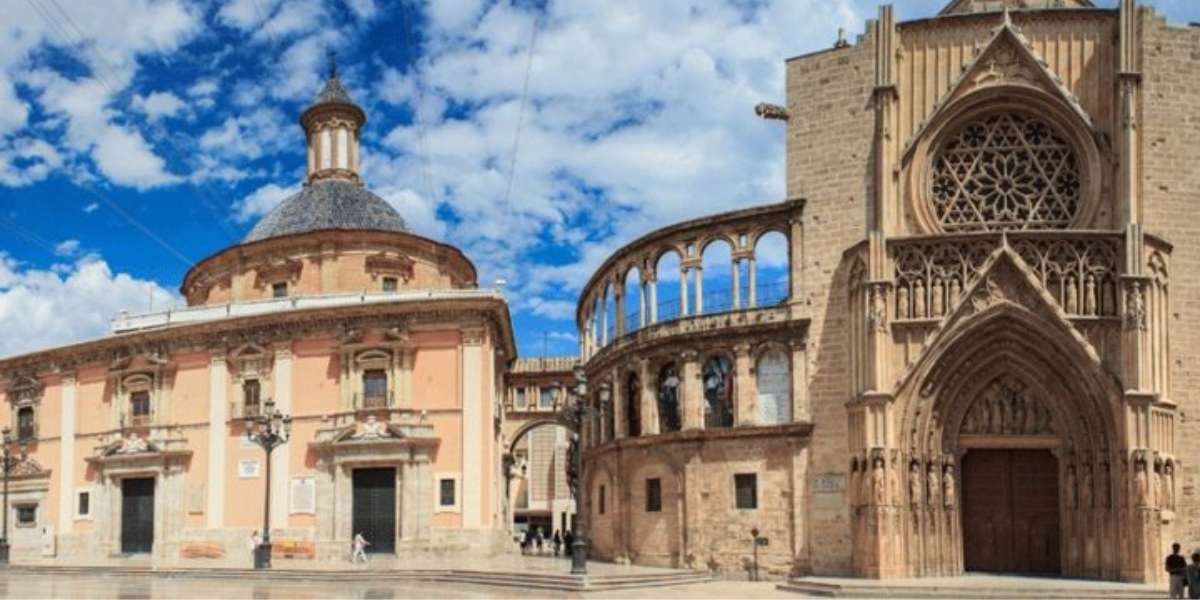
The Cathedral’s built with a fusion of architectural styles—Baroque, Valencian Gothic, Neoclassical, Renaissance, and early Romanesque—reflecting the multiple eras it witnessed during its lengthy construction.
Yet, what captivates many visitors is the lore surrounding the church; it’s said to house the authentic Holy Grail in one of its chapels. While we don’t know if this is true, the chalice has gained recognition as the official papal chalice, notably acknowledged by Pope Benedict.
Torres De Serrano
During your visit, make sure to check out the famous Torres de Serranos.
It was completed by the 14th century’s end in Gothic style. It is part of the twelve gates that made Valencia’s ancient Christian Wall.
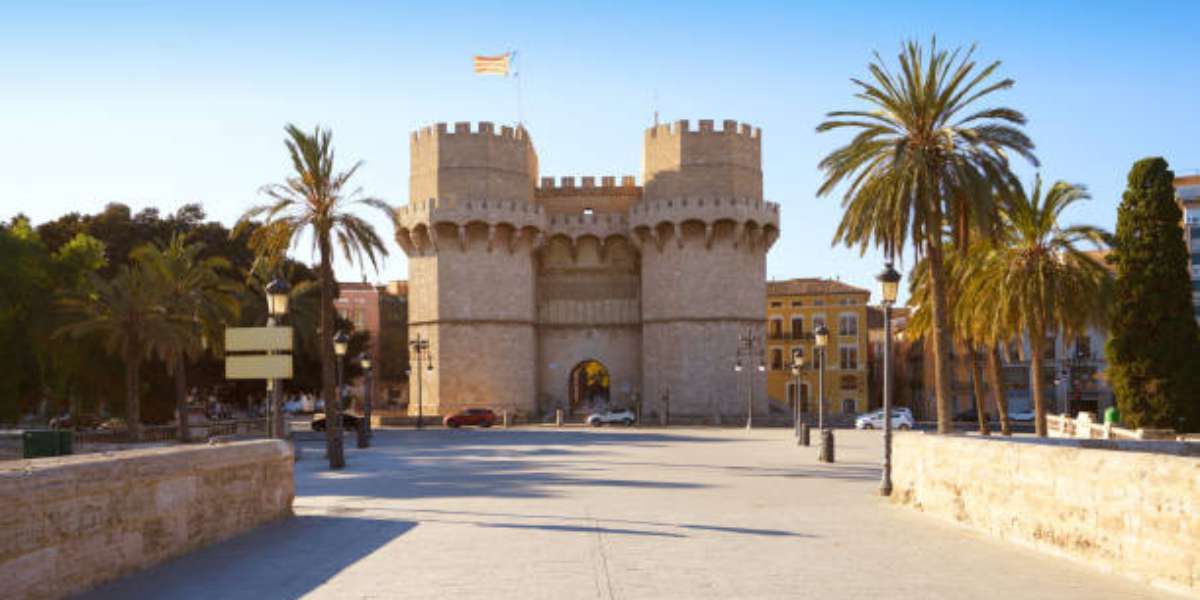
The huge size and beauty of the towers is sure to blow your minds at ground level. However, we definitely recommend climbing up the narrow winding stairs and enjoying breathtaking views from the top.
The City of Arts and Sciences
Valencia’s must-visit gem is the City of Arts and Sciences, a hub crafted by local architect Santiago Calatrava. Its striking buildings are city icons, inviting families and friends to explore this scientific and cultural complex, sprawling across nearly two kilometers of the former River Turia’s bed.
Oceanografic
Oceanogràfic, Europe’s largest aquarium, is an essential stop in Valencia. Housing 45,000 specimens from 500 species, including dolphins, belugas, walruses, and sharks across seven distinct marine settings. Catch the daily dolphin show—it’s a highlight!
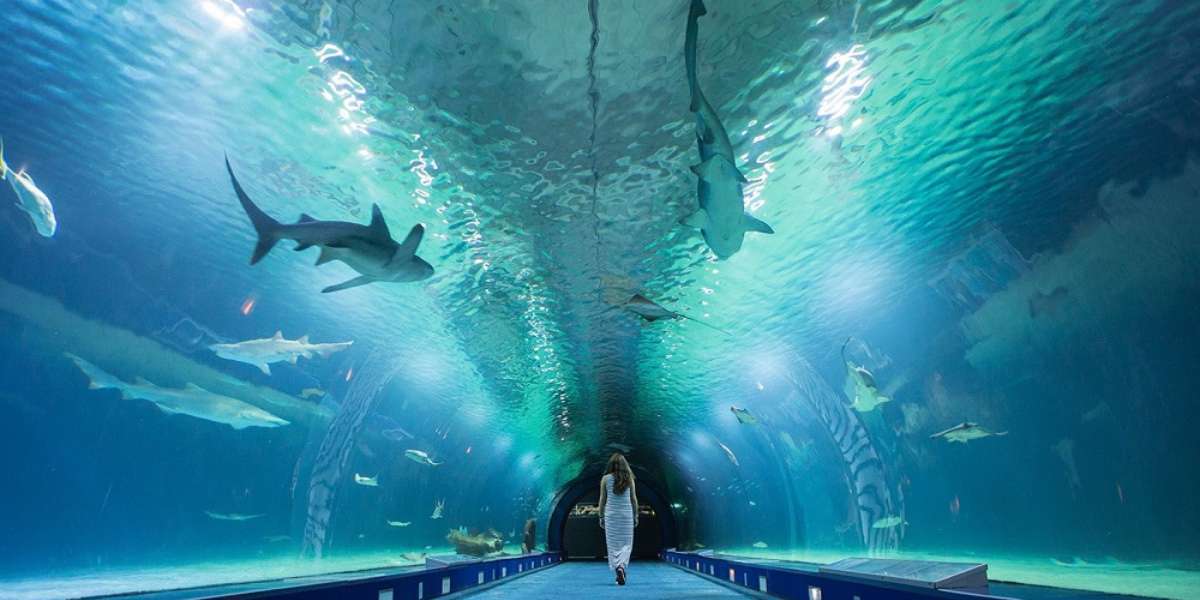
Hemisferic
For an immersive experience, head to the Hemisfèric, a colossal 3D cinema boasting a massive 900-meter concave screen. Enjoy concise 45-minute educational documentaries suitable for all ages, enveloping spectators in stunning visuals.
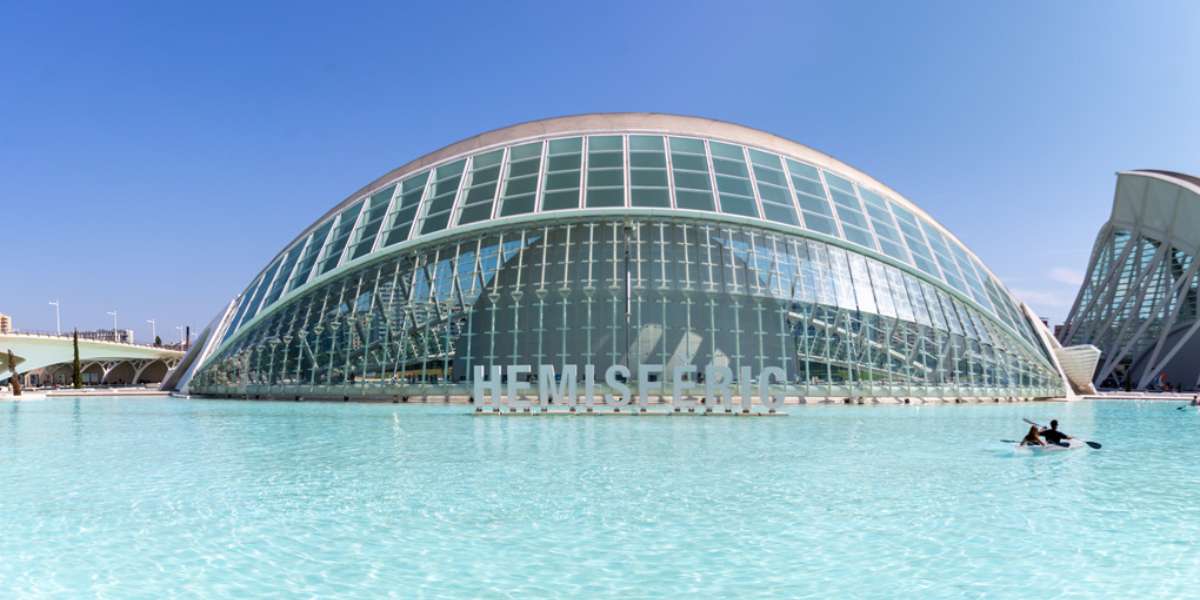
Science Museum
At the Science Museum, interaction is encouraged! Dive into various exhibitions on science and technology. While the ground floor hosts temporary showcases, workshops, shops, and dining areas, the rest of the museum requires a ticket for access.
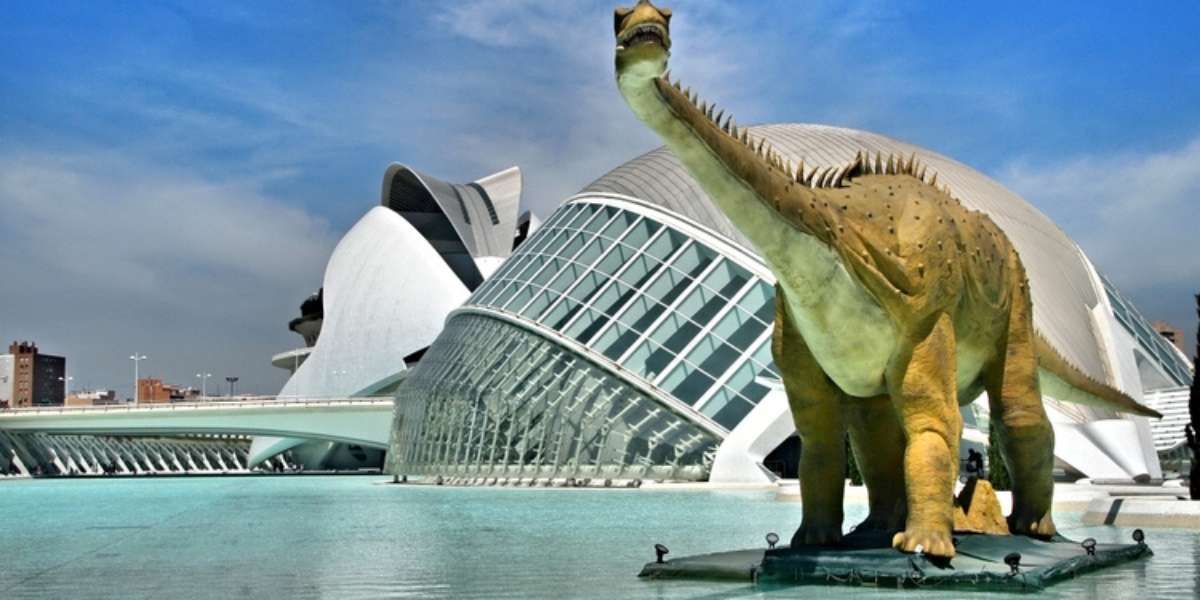
Music enthusiasts shouldn’t miss the Palau de les Arts, offering operas, concerts, zarzuela, and ballet from October to November amid the City of Arts and Sciences.
Umbracle
Take a leisurely stroll through Umbracle, a sprawling 17,000 m2 open-access garden adorned with Mediterranean flora and contemporary sculptures, providing a serene escape.
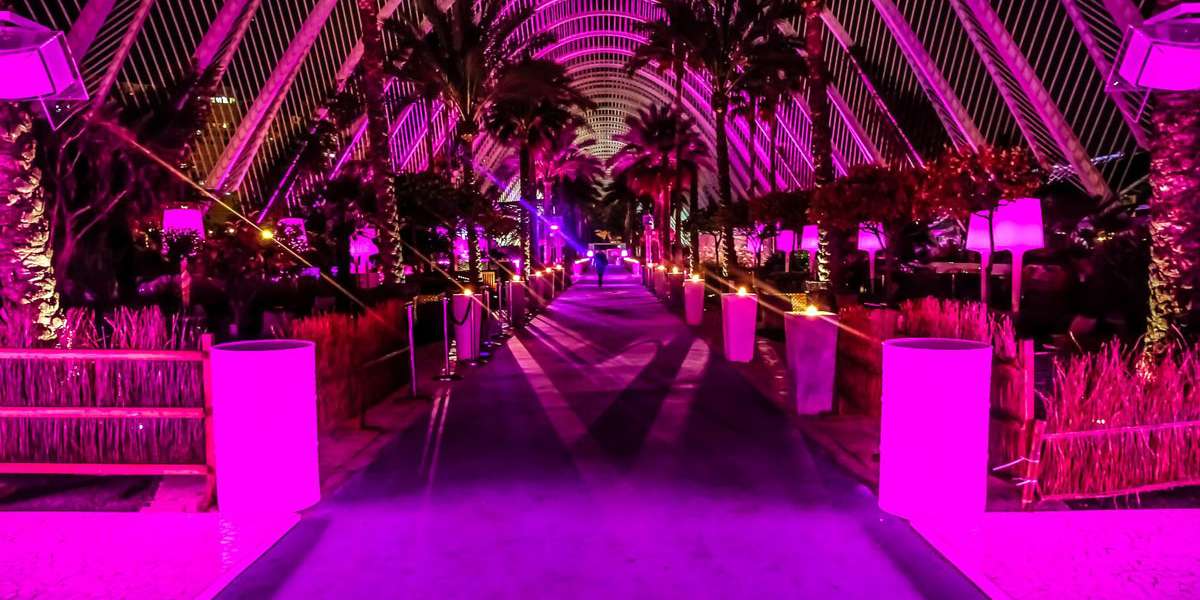
Alicante
If you’re up for chilling by jaw-dropping beaches, enjoying yummy tapas, or going on adventures, Alicante is the place for you. Below, we’ve listed our top picks for things to do here.
Santa Barbara Castle
Up on Monte Benacantil sits the Castillo de Santa Bárbara, looking over the town and the sea. It’s been there for ages, way back to the time of the Carthaginians, and served as a strategic military asset.
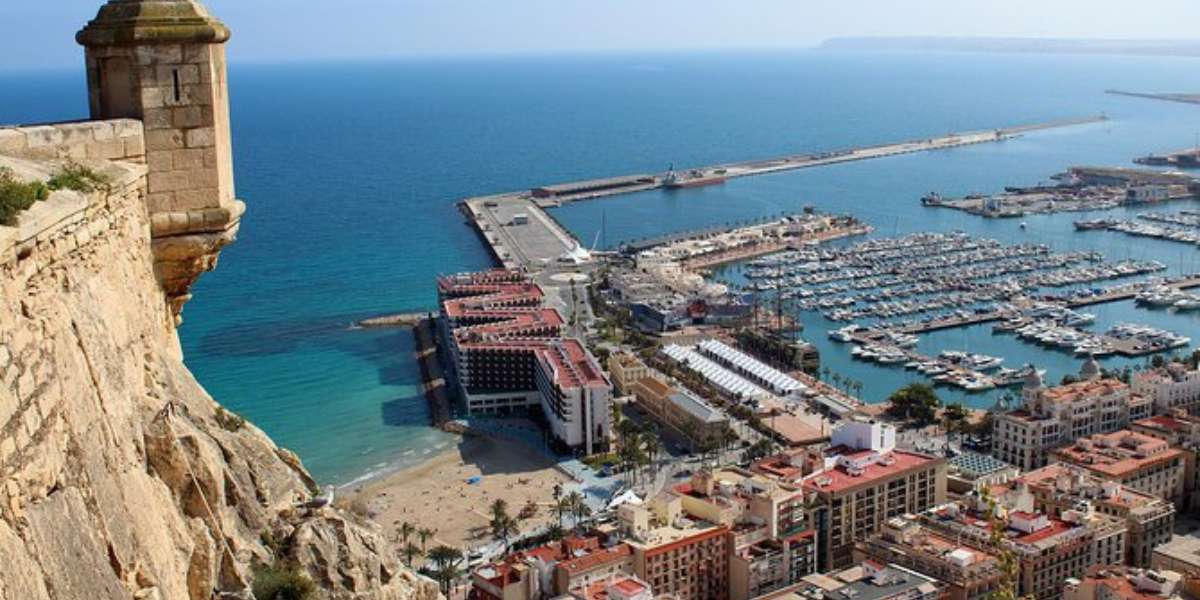
Originally, it was an Islamic fortress back in the 9th century. But then, a Christian prince named Alfonso took it from the Moors during a huge battle on Santa Barbara’s feast day—that’s why it’s called Santa Barbara Castle. Later, during the time of Philip II, they spruced it up in a fancy Renaissance style.
You can visit the castle any time of year. You’ll get to see interesting things like La Torreta (an old tower), Philip II’s beautiful reception hall, the Patio de Armas, and a rampart called Revellín del Bon Repós. Plus, they have special weekends, tours with actors, and food events happening all year round
Central Market
In the early 1900s, this large marketplace came intro existence with beautiful Modernist designs on its facade.
Once you step inside, you’ll be blown away by the liveliness of the bustling Central Market! You’ve got farmers, fishermen, and lots of food sellers making sure everyone in the city gets good food. Downstairs is full of stuff for your home, like things you’d use every day, plus places to get milk and meat. Upstairs is where you find the veggie guys and the fish market.
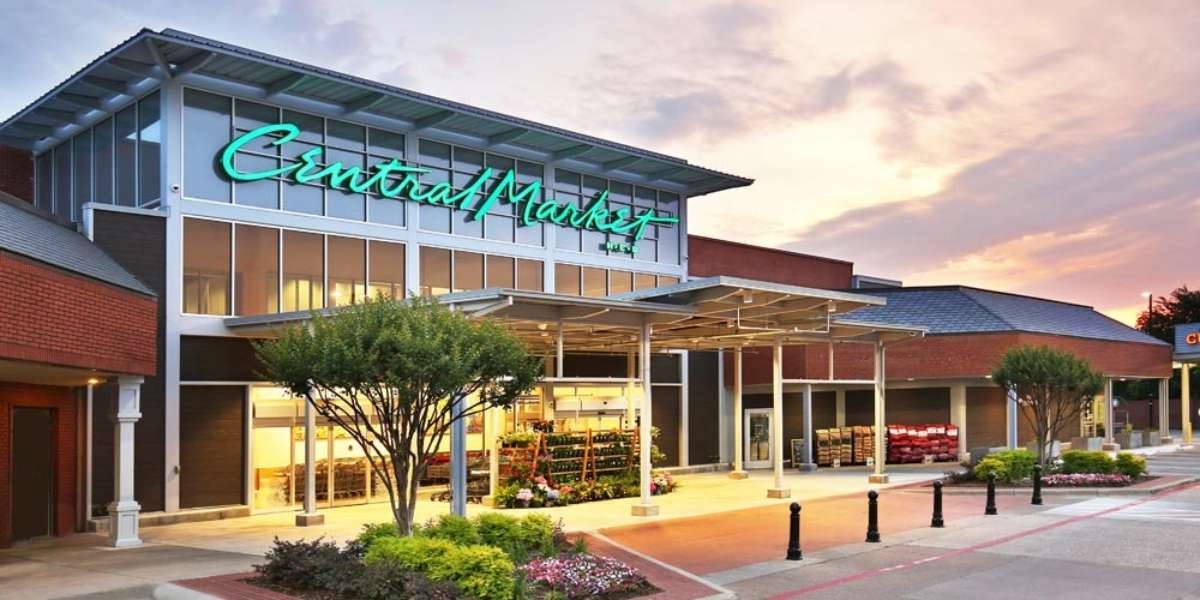
Going to this market is like diving into a classic European food market. It’s so lively and busy that just strolling around is a blast.
Concatedral de San Nicolás
The Concatedral de San Nicolás de Bari is right in the middle of the city, close to the Town Hall. It was built in the 17th century where there used to be a mosque and is all about honoring the town’s patron saint.
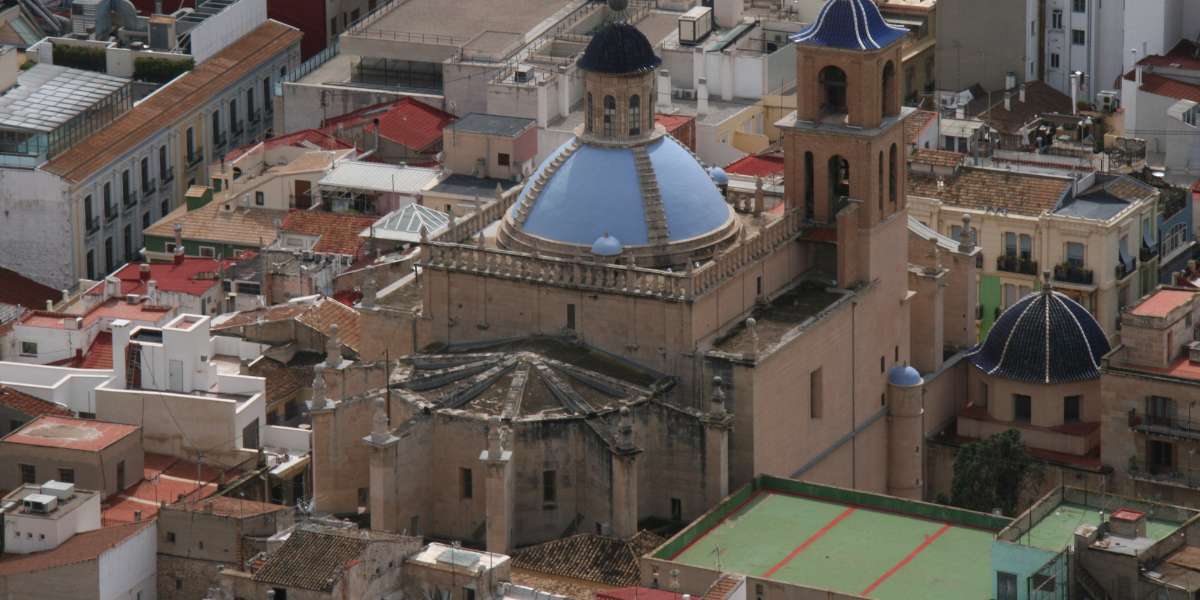
From the outside, it might not catch your eye, but step inside, and it’s a whole different story. The inside is incredible! Think lots of fancy artwork and a super peaceful atmosphere. The main area has these really special artworks called retablos, especially one from the 17th century that’s completely covered in gold. There’s also a really beautiful cloister from the 15th century.
This church is pretty spectacylar because it mixes together two types of architecture: Baroque (which is fancy and decorative) and Herrerian (more about simple designs with straight lines). Overall, the Concatedral de San Nicolás is a must visit spot with beautiful architecture.
Santa Maria Basilica
In the Santa Cruz neighborhood, you’ll find the Basilica de Santa María, the oldest church in Alicante that took the place of the old mosque from the Moorish times. It’s been around since the 14th century and got a rebuild in the 15th century thanks to the Catholic Monarchs.
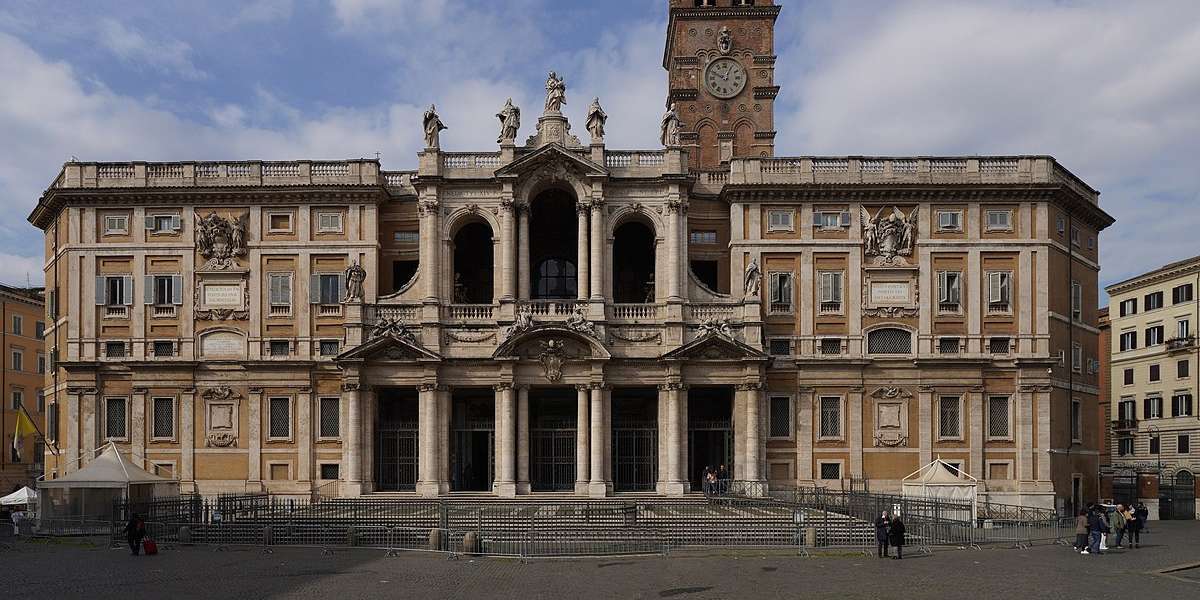
Originally, it had a Gothic look, but in the 18th century, they jazzed it up with a Baroque style on the outside and inside. Right at the front, there’s an amazing Virgin sculpture by Juan Bautista Borja that’s intricately carved in stone.
The building also has two great bell towers, but they don’t look the same because one was built way back in the 14th century and the other wasn’t added until the 18th century.
Additionally, make sure to take a few moments to step into the basilica and appreciate the sanctuary’s beautiful decoration.
Town Hall
The Ayuntamiento (Town Hall) of Alicante is a beautiful location. It’s a grand Baroque building with a Churrigueresque facade along with two imposing towers, that go as high as 35 meters.
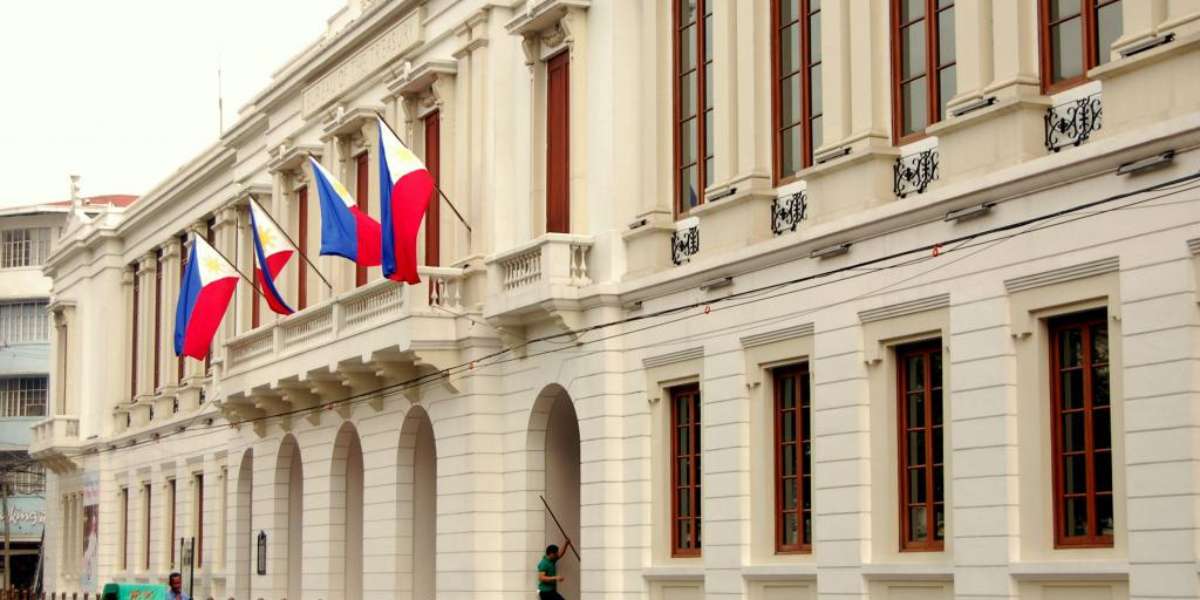
On the stairs leading to the building, there’s a tool used in Spain to measure how high above sea level you are.
Overall, this place is a big deal in Alicante! It’s a Historic Monument, open to visitors every day of the year except for December 25th, January 1st, and January 6th.
When you go in, don’t miss the Blue Room—it’s one of the best attractions here! All the furniture in there is from the time of Queen Isabel. And make sure to check out the Chapel, where they have Mass.
Playa del Postiguet
The Playa del Postiguet sits right in the heart of Alicante, just below the Castillo de Santa Barbara. This beautiful, wide beach gives you peaceful waves and calm, blue-green waters.
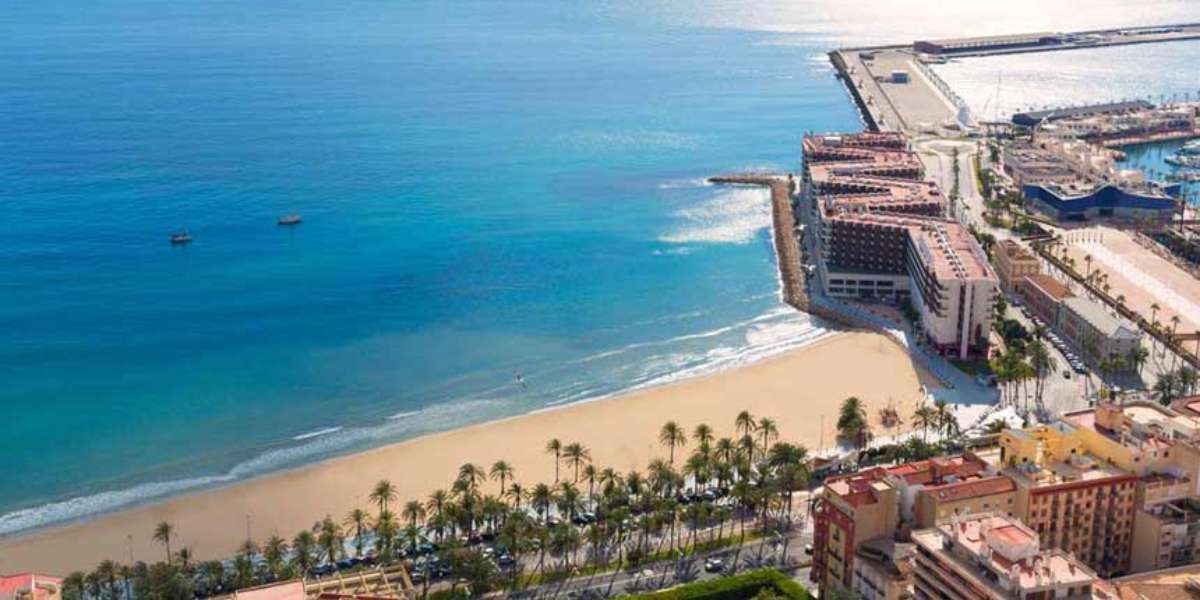
Lots of people come here in the summer because it has gorgeous, soft, golden sand and good spots like restaurants, bathrooms, showers, places to play beach volleyball, a fun area for kids, and things to rent like umbrellas and chairs to sit on.
Montserrat
Montserrat features many historical and religious treasures but it’s also great for nature lovers. The city has beautiful mountain views of the Pyreness on one side and the Mediterranean on the other. Plus, it has some of the best hiking trails in all of Spain
Santa Maria de Montserrat Abbey
Explore the wonders of Santa Maria de Montserrat Abbey! Nestled atop Montserrat mountain, this abbey has a rich history. Established in the 11th century and later reconstructed between the 19th and 20th centuries, it remains an active place with over 70 monks.
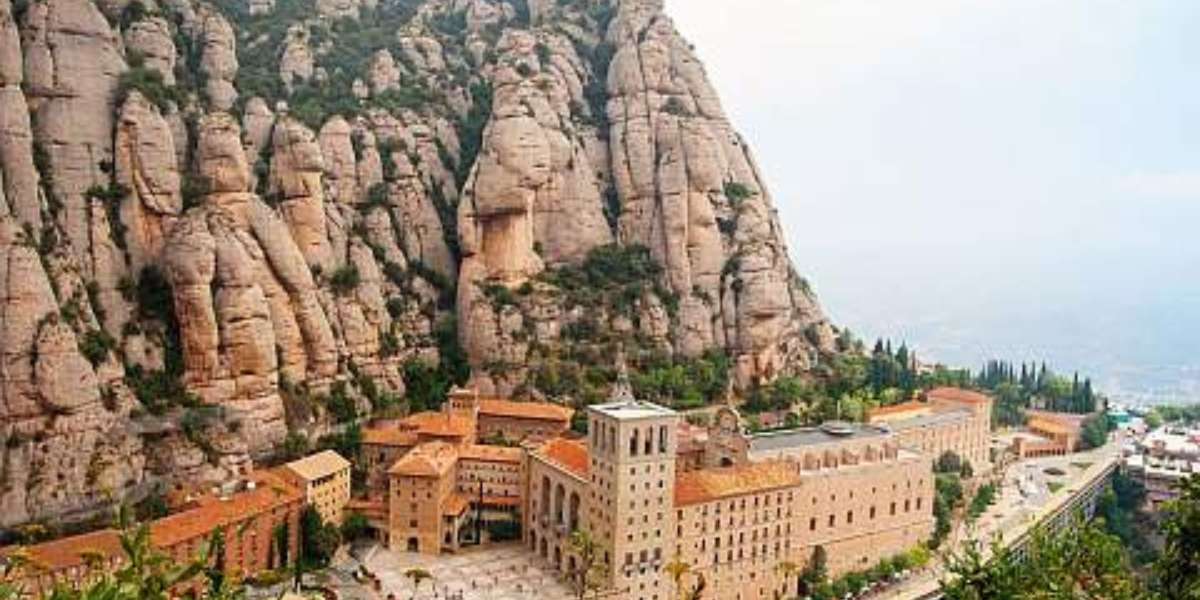
Most visitors are drawn here to see the statue of the Black Madonna, Catalonia’s patron saint, seated above the high altar in the basilica. This sacred site serves as a spiritual haven for people worldwide, attracting those seeking blessings, even newlyweds. Many legends surround the shrine and its origins, and you can learn about these interesting tales during your visit.
The basilica, the abbey’s primary church, boasts a blend of Gothic and Renaissance styles. Notable features include hand-carved sculptures of biblical figures like Ezekiel, Isaiah Jeremiah, and Daniel by Josep Llimona, displayed in the central nave since 1886.
Honoring the Black Madonna, approximately 50 choirboys from the “Escolania de Montserrat,” the monastery’s boarding school, perform church hymns like Salve Regina and Virolai daily, except on Sundays, in the basilica.
Additionally, you should also explore the Montserrat Monastery Museum showcasing remarkable artworks by historical artists such as Dalí, Monet, El Greco, and Giordano, along with archaeological and liturgical exhibits.
For a break, you can head to the monastery’s lower section. Here, you’ll find a budget-friendly restaurant offering food and drinks.
Montserrat Museum
The Montserrat Museum is the perfect place for art enthusiasts! Established in 1963, it houses a captivating collection of archaeological artifacts and Renaissance and Baroque paintings from the monastery.
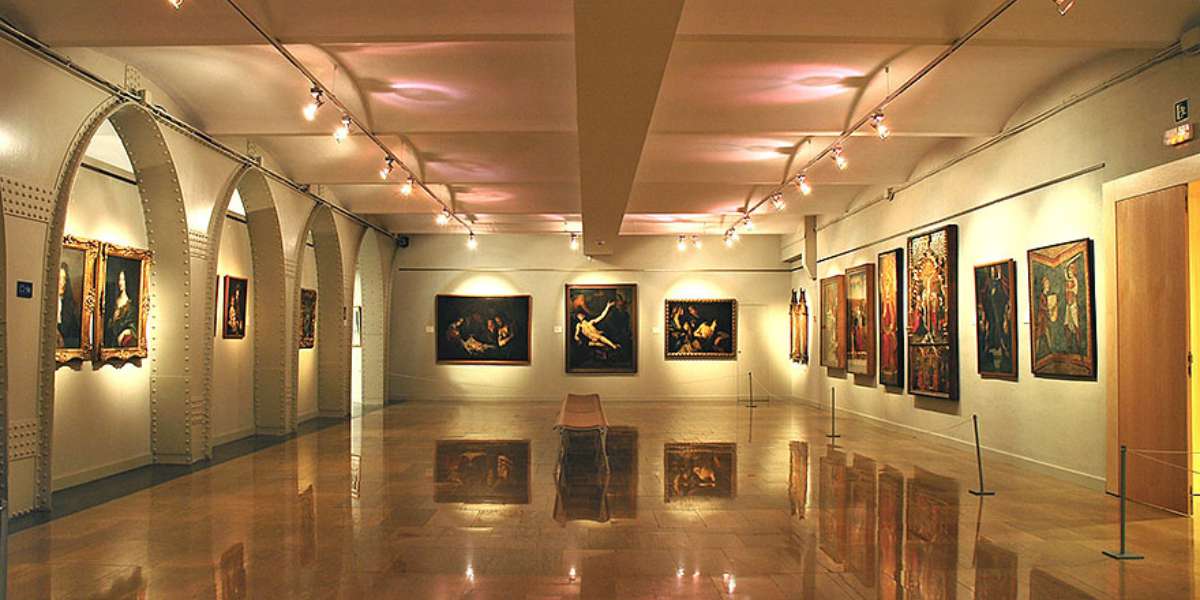
This museum, situated in a building constructed between 1928 and 1933 by architect Josep Puig i Cadafalch, expanded in 1982 to include 19th and 20th-century paintings donated by various patrons.
Today, the museum also boasts temporary exhibition spaces showcasing contemporary art, historical photographs, and more, promising a diverse and engaging experience for every visitor.
Funicular Rides
The funicular ride is a must-do when visiting Montserrat, but be prepared as it might take around an hour. There are two funicular railways at the Montserrat monastery: the Funicular de Sant Joan and the Funicular de Santa Cova.
The Santa Cova line leads to a 20-minute walk, guiding you to the Santa Cova cave chapel. This cave served as a hiding spot for the Madonna statue during Moorish invasions. Inside, an exhibition provides insights into the cave’s history and the railway.

On the other hand, the Funicular de Sant Joan ascends higher into the mountains, offering breathtaking views through its glass roof. Once at the top, you’ll be treated to stunning sceneries in every direction.
Additionally, the Funicular of Sant Joan opens up hiking trails amidst fresh mountain air, making it the perfect spot for a good hike!
Granada
Granada is the heart of Anadulsia. It’s located by the Sierra Nevada Mountains and is a place of gorgeous beauty. The city used to be the Moorish kingdom’s capital from the 13th-15th centuries but now it’s known for its modern vibe. With it’s mix of old and new, this dynamic city is a must visit in Spain.
Alhambra Palace Complex
The Alhambra Palace Complex stands as the paramount jewel of Granada, perched atop a hill in the heart of the city. This beautiful site also posseses the UNESCO World Heritage status. The complex features a rich historical narrative, wonderful architectural marvels, enchanting gardens, and unparalleled vistas.
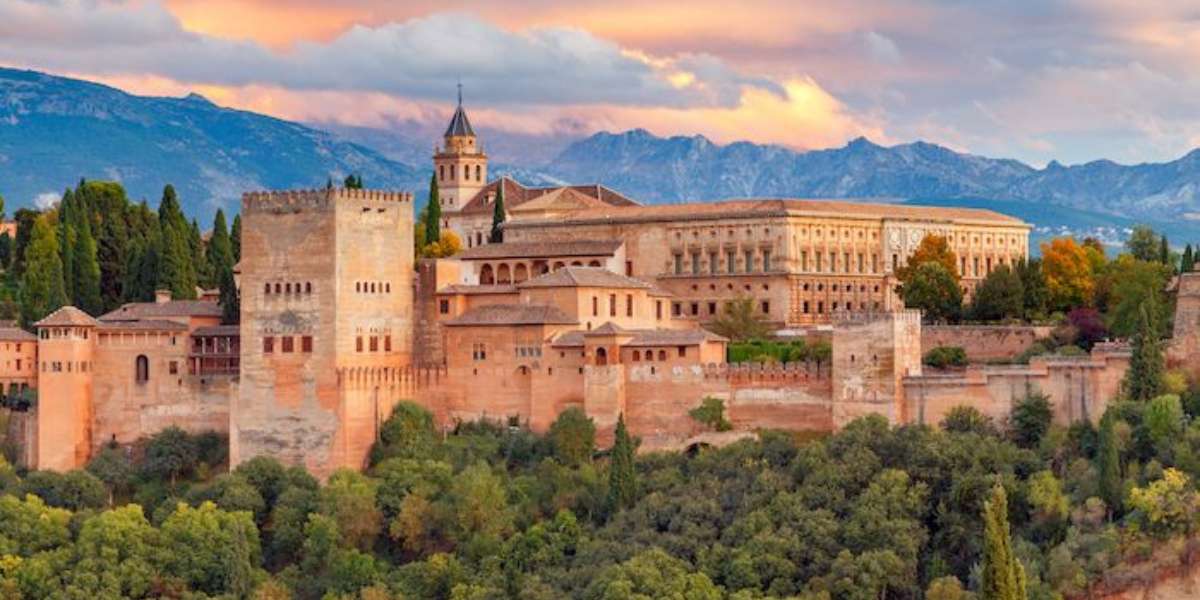
But hey, it’s not just about how pretty it is. You have to know the cool backstory too! This palace was mostly made in the 1200s and 1300s by the Moorish Nasrid Dynasty. They used it as a home for royals and also as a fortress. Later, when the Spanish rulers ruled over Alhambra, they made a few changes and transformed the interiors. They also the replaced the mosque in the complex with a church and other Renaissance-style structures.
Albaicin Quarter
The Albaican Quarter is a Spanish dream come true with its narrow cobblestone roads and traditional homes. You’ll also find charming plazas, historic sites, and quaint courtyards here. And if you’re on the mood for some shopping and dining, there isn’t a better place in Granada than this!
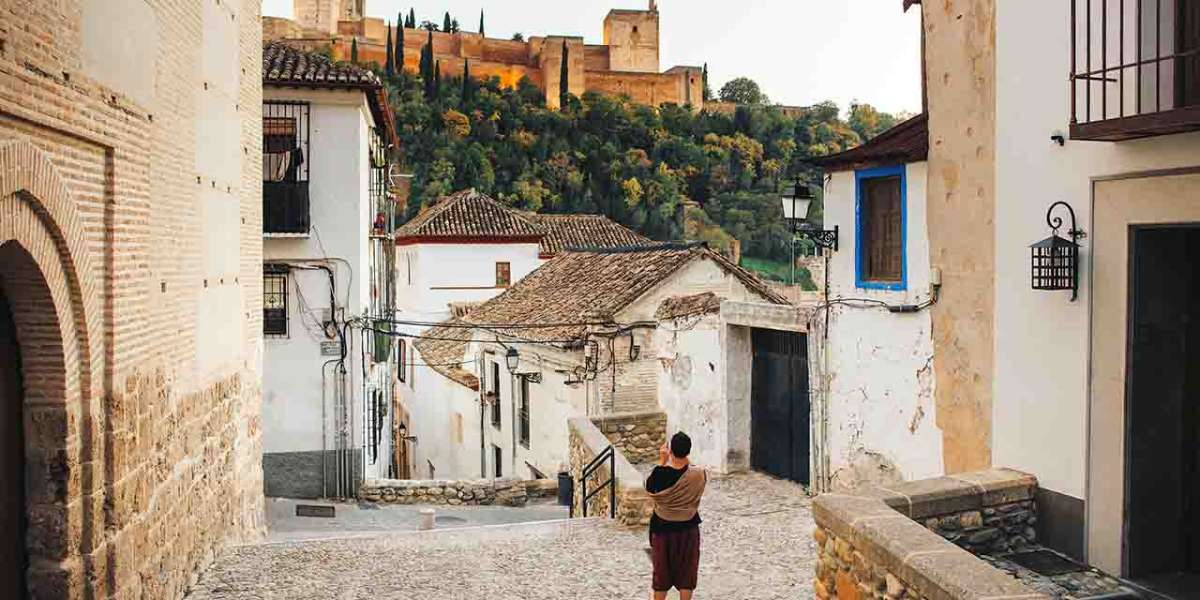
As it was part of Moorish quarter of Granada, you’ll spot many remnants of the old Muslim neighborhood here. Most of the churches here? We’re probably once a mosque. This includes the church of San Salvador. it still features a few Arab inscriptions.
You should also stop at the great tapas places here and enjoy majestic views of the Alhambra from Mirador de Los Carvajales
whatever you decide to do, make sure to leave some time for taking a stroll alongCarrera del Darro. It’s a scenic pathway that looks like it straight out of a fairytale with a arch bridges that run over the beautiful Darro river.
Sacromonte District
Part of the Albaican, the Sacromonte district is known for its gives, and flamenco performances. This gives were and enjoyed by gypsies that arrived in the city in the 15th century.
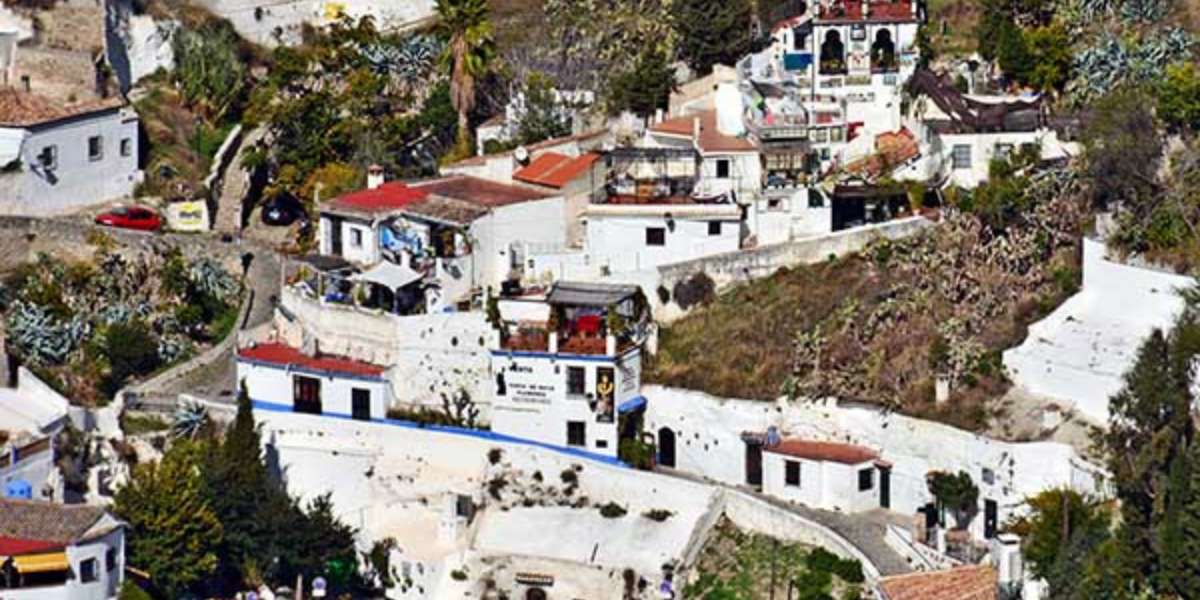
While you’re here, make sure to visit the caves or Zambras for truly enjoying Granada’s culture. Our top favorites caves include Cueva Maria la Canastera, Cueva La Rocio, and Venta El Gallo.
Granada Cathedral
Granada’s Cathedral of Santa María de la Encarnación stands as a prime example of Renaissance architecture in Spain. Commissioned by Queen Isabella to commemorate the triumph of Christians over the Moors, its construction began in the Gothic style in 1523 and later evolved into the Plateresque style from 1525. Although consecrated in 1561, the cathedral remained incomplete.
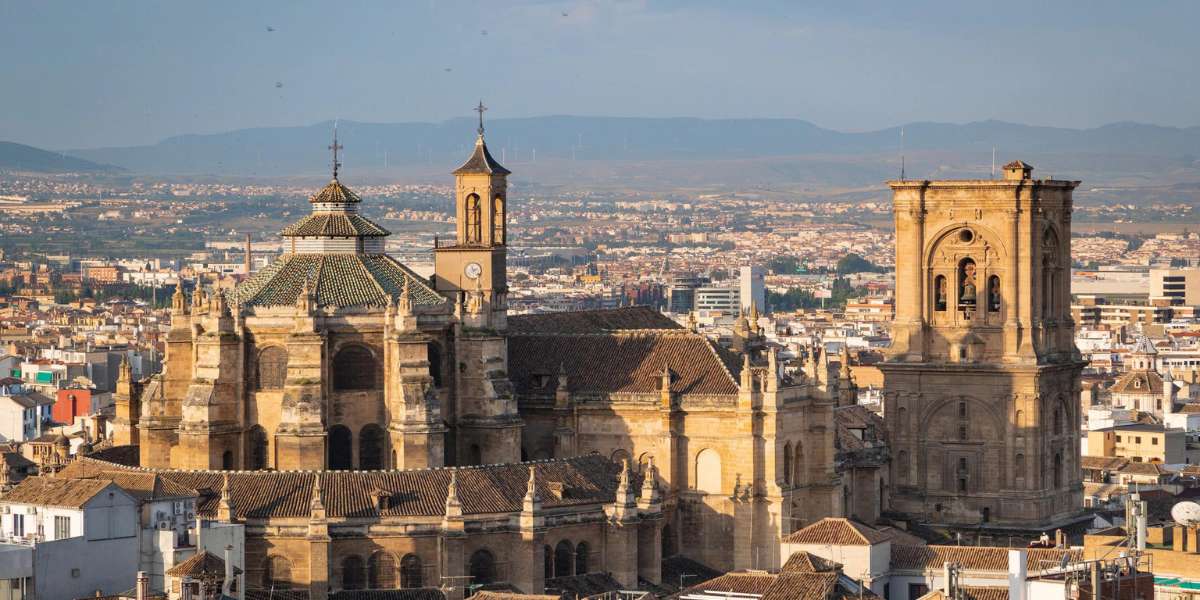
The grand west facade, dating back to the 16th century, showcases a significant relief by José Risueño decorating the main doorway. Elaborate sculptures further make the northwest side of the cathedral stand out. Moreover, you’ll also find statues of the Apostles and Catholic Monarchs on the arch pillars at the entrance.
Our top recommendations that you must check out at the Cathedral include the Capilla Mayor (Main Chapel), the Choir, and Sala Exposición (museum).
Royal Chapel
In Spain, the Capilla Real de Granada stands tall as a symbol of the Catholic Monarchs’ greatness. It’s this grand chapel where the royal tombs rest. Built between 1506 to 1521, this chapel, soaring 47 meters high, showcases stunning Late Gothic architecture.
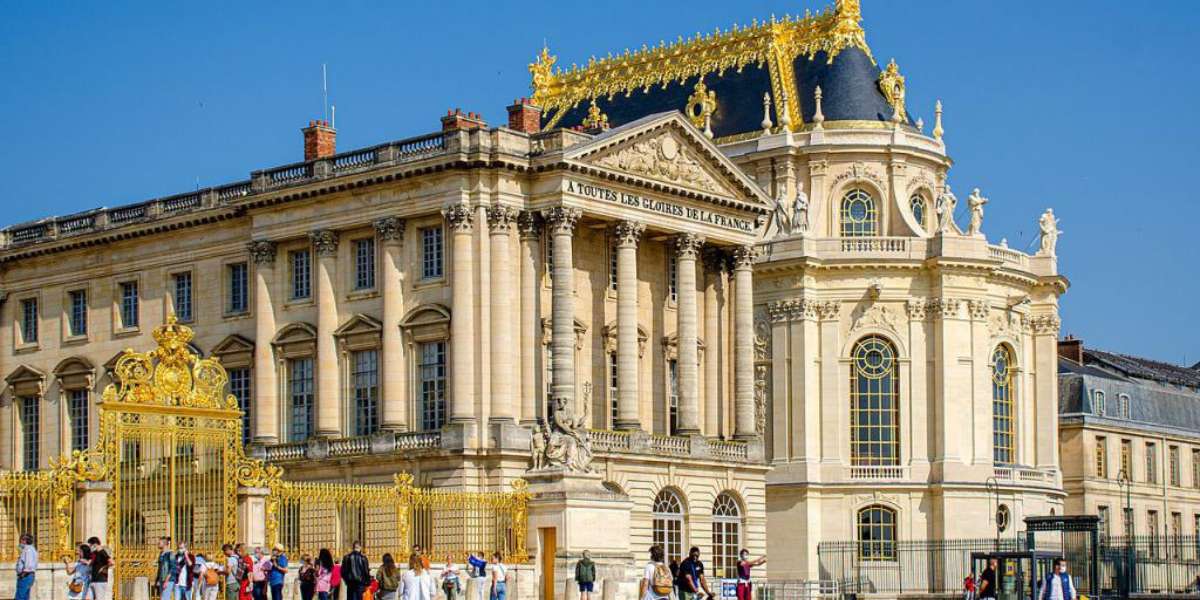
Inside, you’ll find stunning 16th-century stained-glass windows and seven large paintings by Alonso Cano. The royal tombs, richly decorated, are enclosed by an intricately crafted grille made by Bartolomé de Jaén. On the right side lies the impressive Tomb of Ferdinand and Isabella sculpted from Carrara marble by artist Domenico Fancelli.
Venturing into the crypt, you’ll discover sarcophagi of various other kings and princes. On the left side rests the tomb of Philip the Handsome and Joan the Mad, crafted by Bartolomé Ordóñez. A lavishly carved retablo behind the royal tombs holds statues of the Catholic Monarchs sculpted by Diego de Siloé.
Overall, this chapel is a testament to the artistry and grandeur of Spain’s history, a must-visit for anyone captivated by historical beauty
Malaga
Dating back over two thousand years, Málaga stands as one of the ancient Mediterranean seaports, a beautiful spot along the Costa del Sol. It has several spectacular attractions that are a testament to the city’s multifaceted heritage, from a medieval Moorish castle to a magnificent Baroque cathedral. Check out all our favorite spots in this city below.
Alcazaba de Malaga
Discover the incredible Alcazaba in Malaga! This ancient Moorish castle, built around the 11th century, sits atop a hill in the city center, offering breathtaking views of the entire city when you ascend its wall.
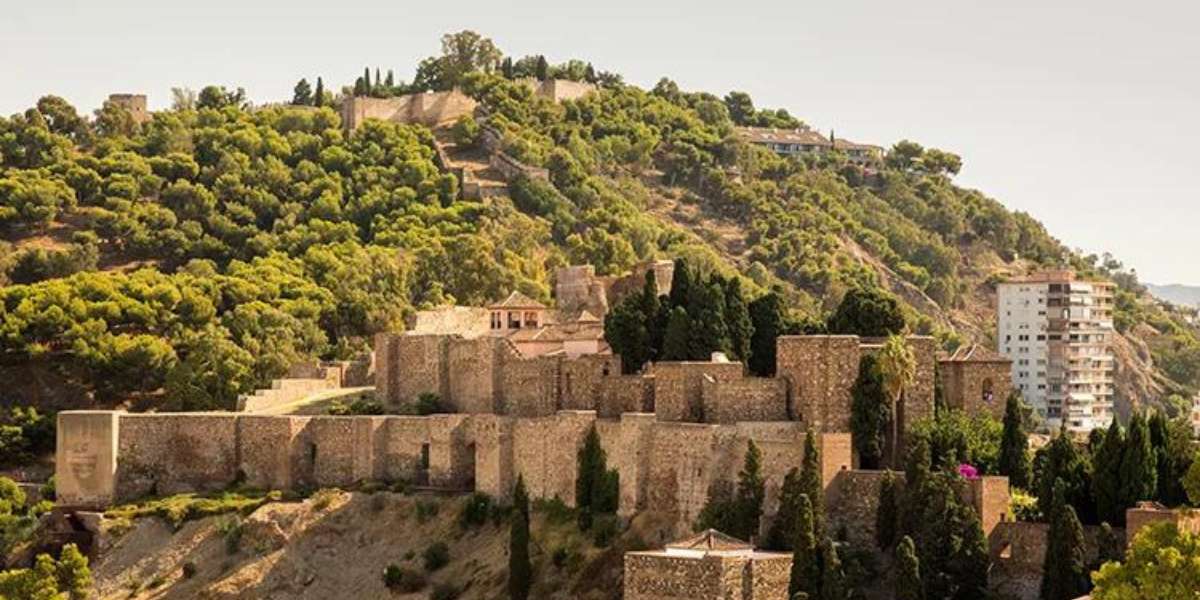
With its origins rooted in a Roman bastion’s ruins, the Alcazaba served as a crucial citadel for the town’s Muslim rulers for many years. Positioned on Mount Gibralfaro, this palace boasts 110 main towers and three layers of defense walls. Remarkably, some towers, like Torre de la Vela, Torre del Homenaje, and the entrance Arco de Cristo, still stand today. Moreover, the castle’s courtyard houses a stunning garden.
Atarazanas Market
Found near the Alameda, this market is a must-see spot. As you step in, the 14th-century horseshoe-shaped Islamic gateway, a remnant of the Moorish shipyard, greets you with its unique charm. What steals the show, though, is the amazing stained-glass window displaying the city’s historical scenes.
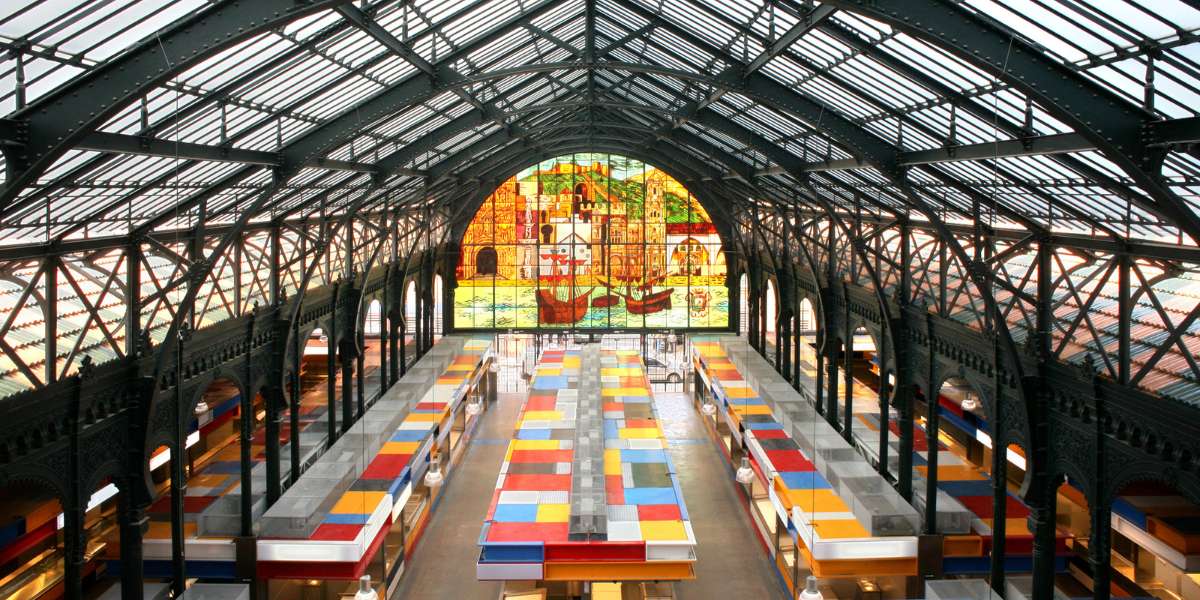
The market building itself was crafted in the 19th century and got a complete makeover in the 1970s after years of closure. Inside, it’s a lively hub where vendors sell fresh produce like fruits, veggies, fish, meat, and cheese. Mornings are particularly bustling with the arrival of locally caught fish, a sight to behold.
For a delightful experience, we recommend seinging by the market’s tapas bars later in the day. Here, you can savor pescaíto (fried fish) and other local treats.
Cathedral of Malaga
Found along the Calle Molina Lario in the Old Town, this beautiful place, known as the Catedral de Málaga, shines as a Spanish Renaissance gem. Dating back to the 15th century, it replaced the city’s Great Mosque and boasts incredible architecture that also includes Baroque touches added in later centuries.
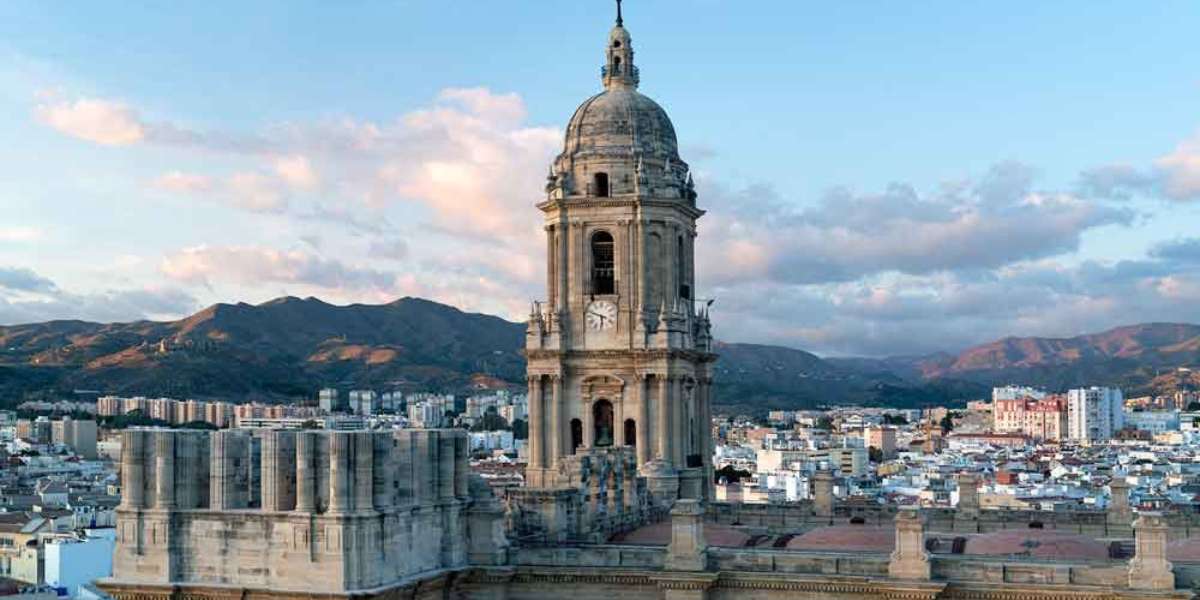
Step inside to be amazed by the Cathedral’s spaciousness and well-proportioned interior. Noteworthy spots include the Capilla del Rosario, showcasing a painting of the Virgin with Saints by Alonso Cano, and the Capilla de los Reyes, featuring kneeling figures of the Catholic Monarchs by Pedro de Mena. This chapel holds the statuette of the Virgin, a significant piece carried by Ferdinand and Isabella during their military campaigns.
While you’re here, we especially recommend checking out the modern altar in the Capilla Mayor, displaying Passion scenes dating back to 1580, and don’t miss the intricately carved 17th-century stalls in the Choir, decorated with 40 wooden statues of saints crafted by Pedro de Mena and José Micael Alfaro.
Outside, the cathedral’s design was never fully completed due to financial constraints, resulting in only one tower, the 86-meter-high Torre Norte, being finished. So, locals fondly refer to it as “La Manquita,” meaning “The One-Armed Woman.”
Old Town
Discover the charming Old Town encircling the cathedral—a maze of medieval pedestrian pathways and serene squares. Wander through these atmospheric streets and its charming boutiques, cafés, and inviting tapas eateries.
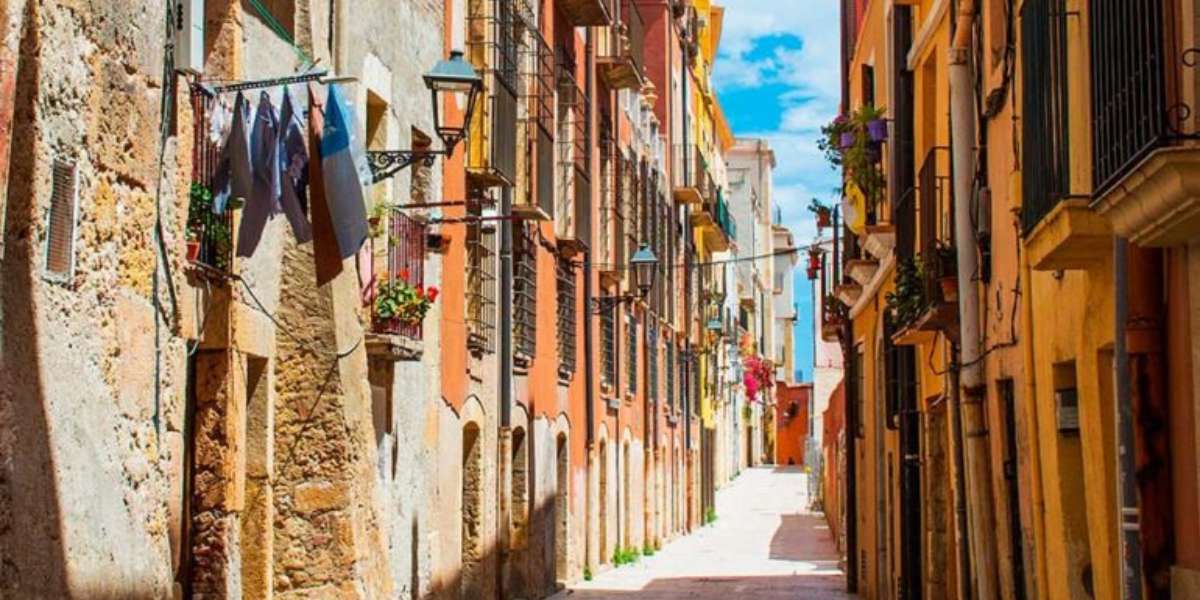
The beating heart of the Old Town is the Plaza de la Constitution—a vibrant center buzzing with activity. It serves as an excellent starting point for your exploration of Málaga’s rich history.
Close by, you’ll find the Iglesia de San Juan Bautista, founded by the Catholic Monarchs following the city’s Reconquest in the 15th century. The church beautifully blends Gothic and Mudéjar architectural styles, while inside, you’ll discover 18th-century Baroque decorations adding to its allure.
Malaga Museum
The Museum of Malaga is actually two museums in one! It’s housed in a spectacular 18th-century building called Palacio de la Aduana de Málaga. Inside, there’s the Museum of Fine Arts and the Provincial Archaeology Museum.
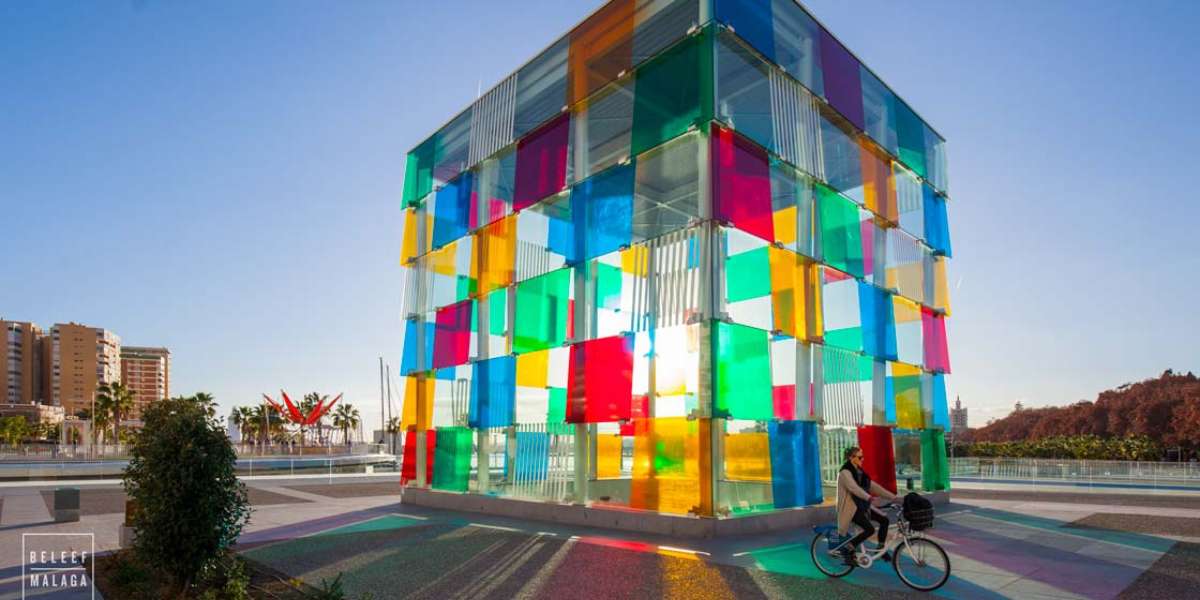
The Fine Arts Museum is absolutely amazing! It’s got a variety of cool 19th-century paintings from local artists and some big names like Luis de Morales, Bartolomé Esteban Murillo, Francisco de Goya, Francisco de Zurbarán, Diego Velázquez, Alonso Cano, Enrique Jaraba, Muñoz Degrain, and Joaquín Sorolla y Bastida. Oh, and it’s even got a couple of Picasso’s early works: Study of Old People and The Old Man with the Blanket.
As for the Archaeology Museum, it’s all about Roman stuff! You’ll see ancient things, Hispano-Arab pottery, and even models of castles. Loads of history packed into these museums!
Malagueta Beach
Malaga has some beautiful beaches, and one of the best-known is Malagueta Beach. It’s super close to the historic center and is loved by many! This urban beach has a mix of sand and pebbles, a long stretch of shoreline, and a cool promenade bordered by swaying palm trees.
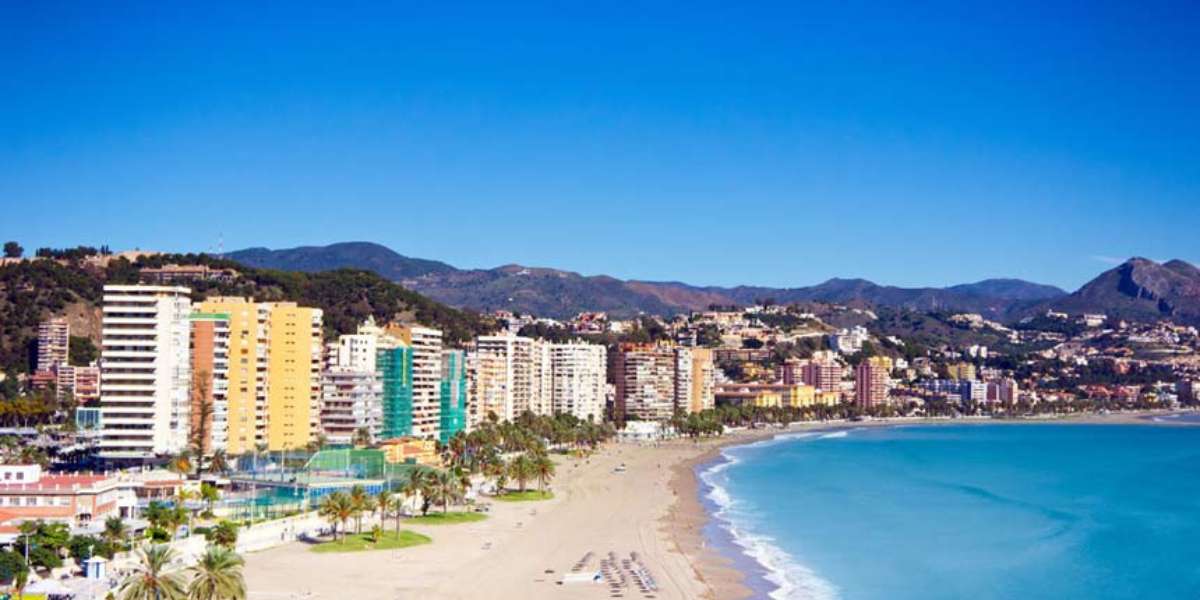
Malagueta Beach is packed with great stuff! There are snack bars, restaurants right by the beach, showers, a playground for kids, and you can rent sunbeds and umbrellas. Plus, they’ve got all sorts of water sports gear for rent. Oh, and right next door, there’s the Real Club Mediterráneo de Málaga yacht club.
It’s a Blue Flag beach, which means it’s safe and clean. Perfect for swimming, trying out water sports, or even setting sail! Come on over and dive into the fun at Malagueta Beach!
Best Foods to Try in Spain
Spain is a foodie’s heaven! Every corner here has its own special dishes that’ll make your taste buds dance.
Paella is like the superstar of Spanish food, a classic rice dish that everyone loves. But hey, ever tried Arroz Negro (Spanish Squid Ink Rice)? It might look a bit odd because of the ink, but the flavors are awesome! We’re sold on it now, for sure!
Oh, and those giant legs of jamón serrano and jamón ibérico hanging around in tapas bars? They’re extremely famous! Spain’s the top spot for making dry-cured ham, and they do it using really old methods. Iberian ham comes from special black pigs, while Serrano ham is from other types.
Gazpacho is another great dish. It’s a chilled soup made of ripe tomatoes, olive oil, garlic, bread, peppers, and cucumber – a perfect summer treat! Then there’s pisto, kind of like Spain’s ratatouille. It’s a hit as a starter or side dish and often served with fried eggs or chorizo.
Now, let’s talk dessert – Churros con Chocolate! These crispy, sugary sticks are even better when you dip them in Spanish hot chocolate. It’s thick, almost like hot fudge, and totally Spanish!
And what about drinks? Sangria, of course! It’s a must-try when you’re here, a flavorful part of the Spanish food scene. Cheers to that!
Scams to Avoid in Spain
Avoiding scams during your Spain trip is super important because getting tricked can really spoil your vacation vibes. Often, these scams happen because you might not know much about the local way of doing things. Doing a bit of homework before you go can save you lots of trouble.
Here’s the deal: always keep an eye on your stuff, especially in busy places or on public transport. But you know what? Scammers have all sorts of tricks up their sleeves to take advantage of tourists. That’s why we’ve put together a guide to help you dodge the most common scams in Spain.
Luck Rosemary
Ever heard of the “lucky rosemary” trick? It’s usually pulled off by older gypsy ladies in the touristy spots of Madrid. They hand you a rosemary twig, start talking about your fortune, and then ask you to pay them for their “service.” It’s a scene if you refuse, and they won’t let you off easily.
Fake Cops
Then there are these fake cops pretending to check your wallet for fake money. They’re sneaky, showing you what looks like real police badges before swiping a few bucks from your wallet.
Taxis Overcharging
Be careful with taxis too. Legit ones have meters you can see, but some drivers ask for a fixed (and often higher) fare, claiming their meter is broken. Some even take a longer route to bump up the bill.
Menus Without Prices
Watch out for menus without prices! They might trick you into ordering “specials” without prices listed, and when the bill arrives, you’re in for a surprise.
Pea and Cup Game
Ever played the pea and cup game? It’s a scam! They let you win a few times and then shuffle things up to swipe your money. Stay away from that!
Fake Charities
And here’s a sneaky one: fake charity workers asking you to sign petitions. While you’re distracted, they rummage through your pockets or bags and vanish with your stuff.
Keep these tricks in mind, and you’ll breeze through Spain without falling for any sneaky scams!
Things To Do If You Are In Spain For Three Days
Even with Spain being a hotspot for travelers worldwide, setting up your initial trip can be a puzzling task. There are plenty of cities to consider, but Barcelona and Madrid stand as top contenders. Within just 3 days, exploring these bustling cities might seem like scary, yet fear not! We’ve crafted a carefully curated selection of must-see spots that’ll make your journey worthwhile.
Day 1: Barcelona
Our journey in Spain kicks off with Barcelona. Start with a delightful stroll along Paseo de Gràcia, a lively spot that’s super popular among tourists and holds huge architectural significance. This place, stretching from Plaza Cataluña to Jardines de Gracia via Ronda de San Pedro, sets the stage for our day’s adventures. Take in the fun vibes of Barcelona as you wander, get a feel for the city, and loose yourself in its lovely atmosphere.
Next, move onto Casa Batlló and Casa Mila, mind-blowing architectural marvels that are must-see spots in Barcelona!
Next, venture into The Gothic Quarter, a place that whisks you back to the city’s early years. Every building here tells a story with its unique architecture. It’s an absolute must-visit to grasp Barcelona’s rich heritage and culture.
The Picasso Museum is another great location offering a glimpse into the genius of this legendary artist. From his early works to his groundbreaking masterpieces, this museum is a window into his creative evolution.
We recommend heading straight to Las Ramblas after this, the city’s famous street bursting with energy. Brace yourself for street performers, shops, bustling terraces, and cozy cafes. And dont forget comfortable shoes— they are a must to navigate through this street.
Lastly, don’t forget La Boqueria, a bustling market brimming with stalls selling fruits, cheeses, veggies, meats, seafood, and more. It’s the perfect spot for a delightful dinner surrounded by many culinary options
Day 2: Barcelona + Madrid
Thank God you have 2 days in Barcelona because you must see Park Güell at least once! Designed by the famous architect Gaudí, this park feels like stepping into a fairy tale. The colorful mosaics, quirky structures, and stunning city views make it a dreamy spot!
Next up, brace yourself for the awe-inspiring Sagrada Familia, a symbol that defines Barcelona. After visiting this iconic place, you’ll have tales to share for hours!
Now, it’s time to journey to Madrid! A 2.5-hour train ride awaits, offering scenic beauty along the way.
First stop in Madrid? The Royal Palace of Madrid! It’s huge, the largest palace in Western Europe and one of the world’s largest. Nowadays, it’s only used for special events and ceremonies as the kings of Spain reside elsewhere.
When in Madrid, you’ve got to taste the best churros in the whole country at Chocolatería San Ginés! This spot in the heart of the city’s historical center will win you over with its unforgettable taste.
Post-churros, take a walk to La Plaza Mayor, a bustling square buzzing with life. It’s an iconic place for first-time visitors to Madrid. You’ll spot the Statue of Felipe III, Casa de la Panadería, Arco de Cuchilleros, and many more essential sights. Consider a guided tour for a deeper understanding!
Our next must-visit spot is the iconic Mercado de San Miguel, where you can dive into authentic local dishes. Grab a drink at one of the bars and groove to upbeat Spanish tunes for an extra delightful experience.
Day 3: Madrid
No Madrid trip is complete without a visit to the Prado Museum. It’s a big deal, probably the most important museum in Spain, jam-packed with around 7,600 paintings and 1,000 sculptures! Art lovers, this is your dream spot. Nearby, you’ve got the lovely Retiro Park, a true oasis in Madrid’s heart. Take a leisurely stroll in this park cherished by all Madrilenians.
After that, hit up Gran Vía, one of Madrid’s major streets. It’s got huge, impressive buildings, awesome shopping spots, and is buzzing with tourists.
And for a beautiful sunset view, head to Templo de Debod, right next to Plaza de España. It’s the perfect spot to unwind and bid farewell to this amazing adventure.
Time for some flamenco vibes! Catch a flamenco show for a true Spanish experience.
Still got some time left? Test your brain at the Museum of Illusions, a super cool place filled with optical illusions that’ll make you feel like a kid again!
Or, opt for a show at Teatros del Canal, one of Madrid’s modern theaters featuring contemporary dance and theater. Wrap up the day with a fantastic show, followed by a delicious dinner as you bid Spain farewell.
Things To Do If You Are In Spain For Five Days
Going on a 5-day Spanish adventure gives you the chance of discovering the heart and soul of this gorgeous country. With ample time at hand, dive deeper into the city’s treasures and immerse yourself in its rich history, captivating culture, and savory cuisines.
Day 1: Barcelona
Day 1 in Barcelona kicks off at the bustling La Rambla, a famous street buzzing with life. Stroll along this boulevard named after the sandy riverbed, Ramla. Admire the Christofor Colombus Statue, and the lively La Boqueria Market. And make sure not to miss visiting the Font de Canaletes fountain!
Next up, uncover the underrated gem of Barcelona – The Barcelona Cathedral, a stunning Gothic masterpiece housing a flock of geese and an Instagram-worthy rooftop. Follow it up with a leisurely walk through the ancient alleys of the Gothic Quarter, blending history with modern charm.
Now, make way to the Museu Picasso in Barrio La Ribera, showcasing captivating art. Then, head north to the serene Parc de la Ciutadella, a tranquil haven with tropical palms and adorable parrots. And if you still have some energy left, make sure to visit the Sagrada Familia before getting some authentic Spanish dinner and heading back to your hotel.
Day 2: Barcelona + Madrid
Day 2 unfolds with a fun exciting experience – wine tasting in Barcelona. Whether you’re a wine pro or just up for a cozy time, it’s a palate-pleasing journey and a fantastic way to spend your vacation time.
Next, discover more treasures in Barcelona – take a leisurely stroll along Paseo de Gràcia and explore Casa Mila and Casa Battlo.
Then, hop on a train for a 2-3 hour ride to Madrid, an art haven showcasing Spanish masterpieces by Goya and Velázquez.
Kick off your Madrid adventure at Puerta Del Sol, the heart of Madrid. This central square offers easy access to major sights and a perfect starting point for your stay. Spot Kilometer Zero, the bear and the madroño tree, Madrid’s symbols.
Indulge in the best churros just a 3-minute walk away at Chocolatería San Ginés. Explore Plaza Mayor, its vibrant red walls, and the Philip III statue. And don’t miss out on the bustling Mercado San Miguel offering crowd-favorite treats like croquettes, jamon, manchego, or mini open-faced sandwiches.
Day 3: Madrid
Day 3 in Madrid unfolds with a real gem – the Royal Palace, a European marvel and a must-visit during your 2nd day in Madrid. Prepare to be wowed by its incredible details and grandeur. Set aside a good 3 hours to soak in the palace and its splendid gardens.
And, don’t miss out on the ancient charm of The Temple of Debod, an Egyptian marvel dating back to 200 B.C. It’s the perfect spot for a breathtaking sunset. Catching a sunset here will leave you feeling ecstatic!
Up next, explore the renowned Museo del Prado. Ensure to snag your tickets early and grab an audio guide for a complete experience. Later, venture into the tranquil Retiro Park.
For an evening meal, Platea is a must-visit – a former theater transformed into a fancy food market. Enjoy your tapas and wine amidst the possibility of complimentary entertainment like Flamenco dancing or live music. A perfect way to wrap up your day!
Day 4: Valencia
Today’s the day to venture to Valencia! Hop on the high-speed train from Madrid, covering 233 miles in just over 1.5 hours – an experience in itself! Valencia stands out as one of Europe’s most culturally rich and vibrant cities.
Start your morning exploring the lively Mercado Central, a massive structure right in Valencia’s old town. Then, go to Plaça de la Reina, adorned with historic buildings, cozy outdoor cafes, and the captivating Turia Fountain at its heart – an essential stop for every Valencia visitor.
Move on to Valencia Cathedral, a stunning 13th-century masterpiece connecting iconic plazas – Plaza de la Reina and Plaza de la Virgen. This beautiful structure showcases various architectural styles like baroque, Romanesque, and gothic.
For a spectacular view, climb up Torres De Serrano. Once part of the city’s ancient wall, now it offers an incredible aerial view of Valencia.
The City of Arts and Sciences, an impressive attraction, lies beyond the old town. Explore its diverse offerings like the Oceanographic, Hemisferic, and Umbracle.
Call it a day in Valencia with the iconic Spanish dish – paella! Valencia is the birthplace of this spectacular meal, making it an absolute must-try when visiting!
Day 5: Alicante
Just a quick 1.5 to 2-hour drive from Valencia sits Alicante, waiting for you to explore its wonders!
Start your day in Alicante with a visit to Santa Barbara Castle, a majestic sight that stands tall and proud, commanding the city’s skyline.
After soaking in the views, venture into El Barrio, the heart of Alicante’s Old Town. This charming area boasts narrow, twisty streets, adorable plazas, and colorful buildings that’ll steal your heart. Begin your exploration at the Central Market, a bustling indoor hub offering a delightful array of local goodies.
From there, wander through El Barrio to reach the Concatedral de San Nicolás. Though its exterior might seem a bit serious, step inside to discover a world of beauty—gorgeous stone carvings and intricate stained glass windows await you. Don’t miss the Santa Maria Basilica, the city’s oldest active church, steeped in history and significance.
Next up is a visit to the Town Hall, housed in an exquisite 18th-century building.
Lastly, make your way to Playa del Postiguet—a sandy haven where your Alicante adventure concludes. Sink your toes into its golden sands, take in the crystal-clear waters, and marvel at the view of Santa Barbara Castle. Enjoy delicious local eats nearby to refuel before getting ready for going back home.
Things To Do If You Are In Spain For Seven Days
Get ready for an incredible adventure exploring Spain in 7 days! This travel plan is all about soaking in Spain’s vibrant culture, savoring delicious cuisine, and admiring breathtaking architecture, including the mesmerizing creations by Gaudi.
Day 1: Madrid
Start your 7-day Spain adventure in the lively Spanish capital!
Begin your day bright and early at Plaza Mayor, capturing Insta-worthy photos, and hop on a Segway tour for a cool way to explore around.
For a delightful lunch, stick around Plaza Mayor and savor a delicious meal. Trust us, it’s the ideal start to your Spain trip!
In the afternoon, grab the Museum Card and visit Museo Nacional Del Prado and Museo Nacional Centro de Arte Reina Sofía—total must-sees.
After the Museo Nacional Centro de Arte Reina Sofía, head to the Retiro Park for some nature-filled fun.
After a bustling day of sightseeing, treat yourself to a scrumptious dinner and drinks at the lively tapas bars around the city
Day 2: Explore Madrid + Half-Day Trip to Segovia
Exploring Madrid’s famous Royal Palace today, a grand 18th-century landmark still used for ceremonies of the state. Wander through its rooms, including the banquet halls and throne room, and soak up some history.
Next to the Palace are the Sabatini gardens—part of the Palace grounds—open all day for a relaxed stroll, and there’s no need for an extra ticket.
Afterward, head to Gran Via for souvenir shopping or to grab some new clothes. It’s home to one of the world’s biggest Primark stores!
In the afternoon, take a half-day trip to Segovia from Madrid. It’s an amazing place offering a real taste of Spanish culture. Don’t forget your camera for this historical and artistic city!
Don’t miss the iconic Aqueduct of Segovia and the impressive Alcazar Fortress, the city’s main castle. Also, climb up the 152 step staircase to reach the top of the Tower of Juan II and enjoy gorgeous views.
Wrap up your day back in Central Madrid with a variety of tapas, a flavorful paella, some chicharron, and top it off with delicious churros.
Day 3: Barcelona
Head to Barcelona today. To get to this city from Madrid, you can take a 90-minute flight or enjoy a 2.5-hour train ride to soak in the scenery.
In Barcelona, start by exploring the stunning Sagrada Familia known for its amazing architecture. Remember to book tickets beforehand to skip long lines!
Next stop, Park Guell—a breathtaking park offering epic views of Barcelona. It’s sure to be the highlight of your Catalonia trip.
For a little bit of fun, you can visit one of the spectacular wineries in Barcelona and enjoy a wine tasting tour. These tours allow you to taste delicious and unique Spanish wines like Cava!
Then, visit La Rambla where you’ll find several spectacular spots including the Christopher Colombus Statue. And, don’t miss shopping here—it’s a must-do in your Spain adventure!
When you get hungry, head to La Boqueria Market for delicious Spanish treats and affordable hearty meals.
Follow this up with a leisurely stroll around the Gothic Quarter, visiting spots like Placa Reial and Palau de la Musica Catalana for a charming experience.
Day 4: Montserrat
A great day trip from Barcelona is Montserrat, a stunning mountain range in Catalonia, Spain, just an hour away by train. Take a cable car to reach the top—a truly unforgettable experience!
The famous Santa Maria de Montserrat Abbey is a must-see, dating back to the 9th century and still active today with around 80 Benedictine monks. If you time it right, catch a performance by L’Esconia Montserrat, a world-renowned boys’ choir, at the Basilica.
Explore the Montserrat Museum nearby, boasting an amazing collection of art by famous artists like Dali, Monet, and Picasso.
Continue your adventure by taking the funiculars—cable cars—to different spots. The Funicular of Santa Cova leads to the Holy Cave, while the Funicular of Sant Joan takes you high into the mountains, offering hiking trails and fresh mountain air. Don’t miss hiking here!
Before heading back to Barcelona, try out the delicious regional specialties of Montserrat like honey, cheeses, cakes, and pastries or take them home.
Day 5: Valencia
After exploring Spain’s big cities, the next stop on your adventure is Valencia, and let us tell you, it’s amazing!
Getting to Valencia is part of the fun—choose a scenic train ride or a quick plane trip. We recommend the train from Barcelona to Valencia; it’s only about 3.5 hours.
Valencia is full of things to do. Dive into its rich history and culture in the Old Town’s charming streets. Don’t miss the historic Valencia Cathedral, the Mercado Central, and the Torres De Serrano.
Make sure you also visit the City of Arts and Sciences, a super cool modern architecture spot with lots of marvelous spots.
And of course, don’t leave without trying Valencia’s famous dish—delicious paella!
Day 6: Malaga
The next stop on your Spain trip is Malaga—a place filled with history, art, and friendly people, promising a great time!
Once you’re in town, explore the Old Town with its historic buildings, cafes, and shops—it’s really charming.
Malaga is bursting with historical richness, and you’ll feel it too when you visit. One must-see spot in Malaga is the bustling Atarazanas Market housed in a stunning building with beautiful stained glass windows. It’s perfect for foodies and shopping lovers! Also, don’t miss the Cathedral of Malaga and its Museum.
Moreover, the Alcazaba Malaga should definitely be on your list. This Moorish-era fortress is straight out of a fairy tale.
For some chill time, head to Malagueta Beach and enjoy the scenic views.
And finally, end your day with an authentic Spanish dinner and maybe a cocktail at some cool bars in town. Remember to take it easy because Day 7 is all about exploring the ancient Arabic town of Granada
Day 7: Granada
Your final day in Spain brings you to Granada, a town steeped in Arabic history as it was once part of the Arabic empire—formerly known as the Emirate of Granada. You’ll notice the Arabic influence all around!
Start by exploring the city’s remarkable landmarks, like the impressive Alhambra palace complex. Remember, book your Alhambra tickets in advance to skip long lines.
The Alhambra is famous for its stunning designs set against the beautiful Sierra Nevada backdrop.
After this, wander through the charming narrow streets of the ancient Albaicin quarter. Admire the vibrant street art and taste some delicious tapas.
Next, visit the Sacromonte district, known for its cave dwellings and captivating flamenco shows. Follow it up with exploring the rich history and art at the Granada Cathedral and the Royal Chapel.
Finally, end your day with an authentic Spanish dinner and start packing for your journey back home.


